

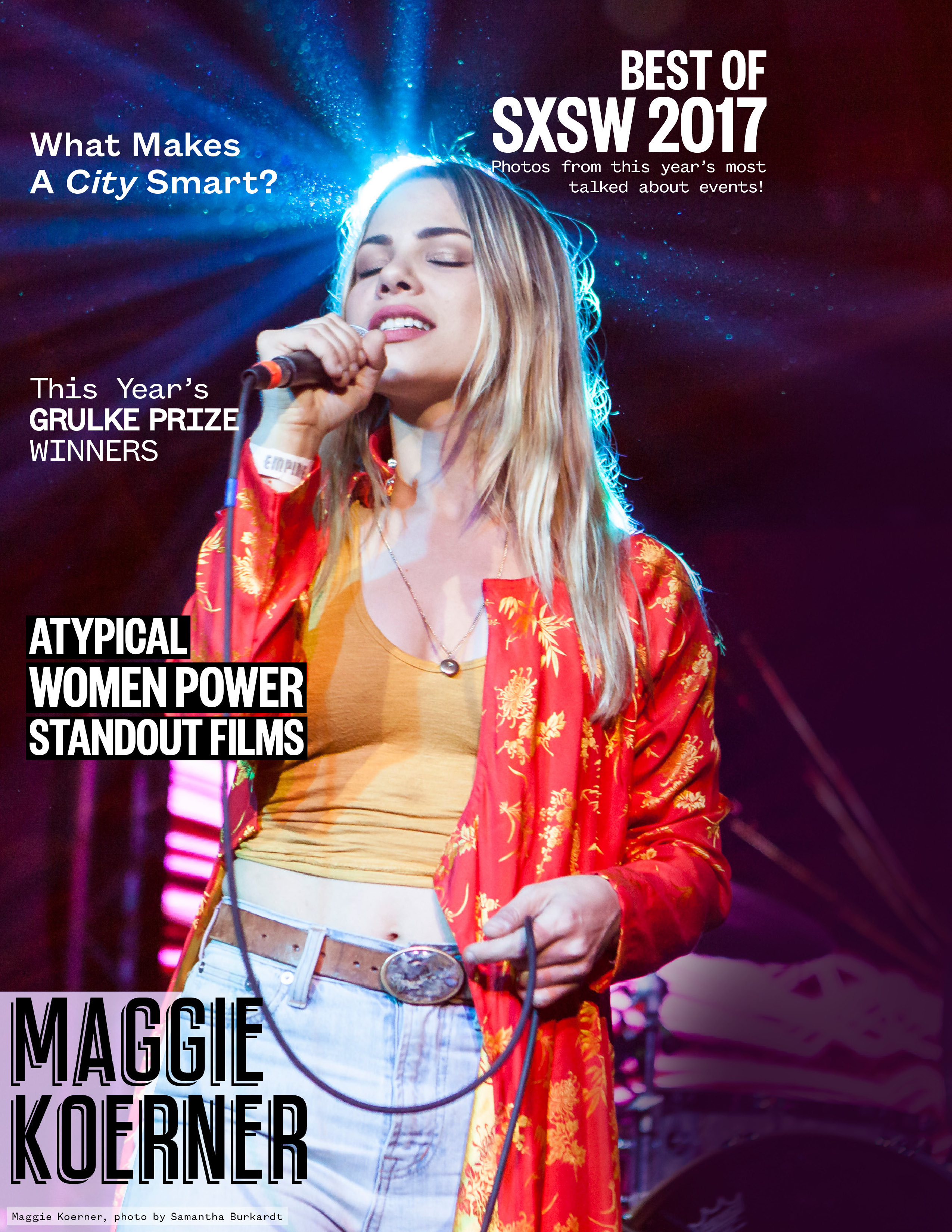
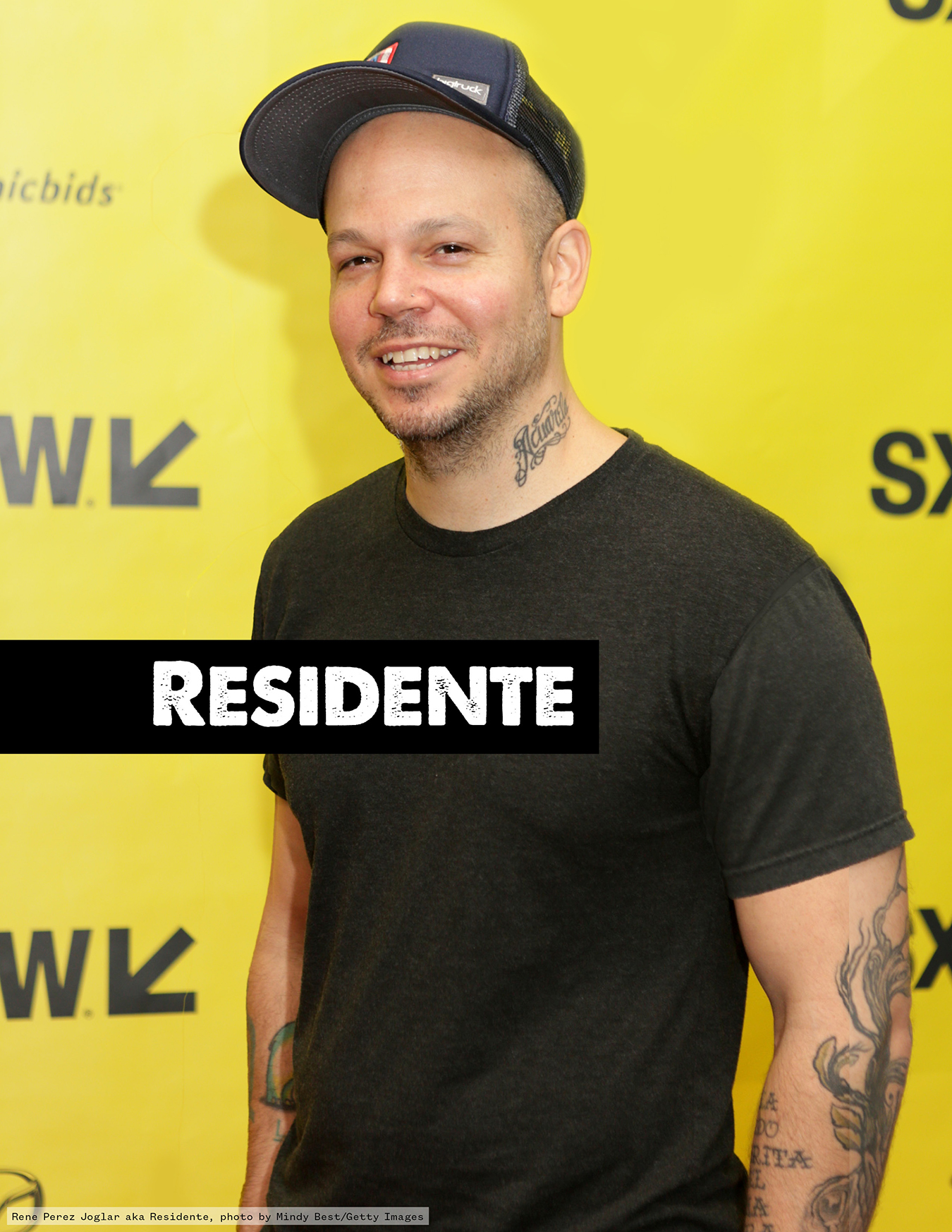
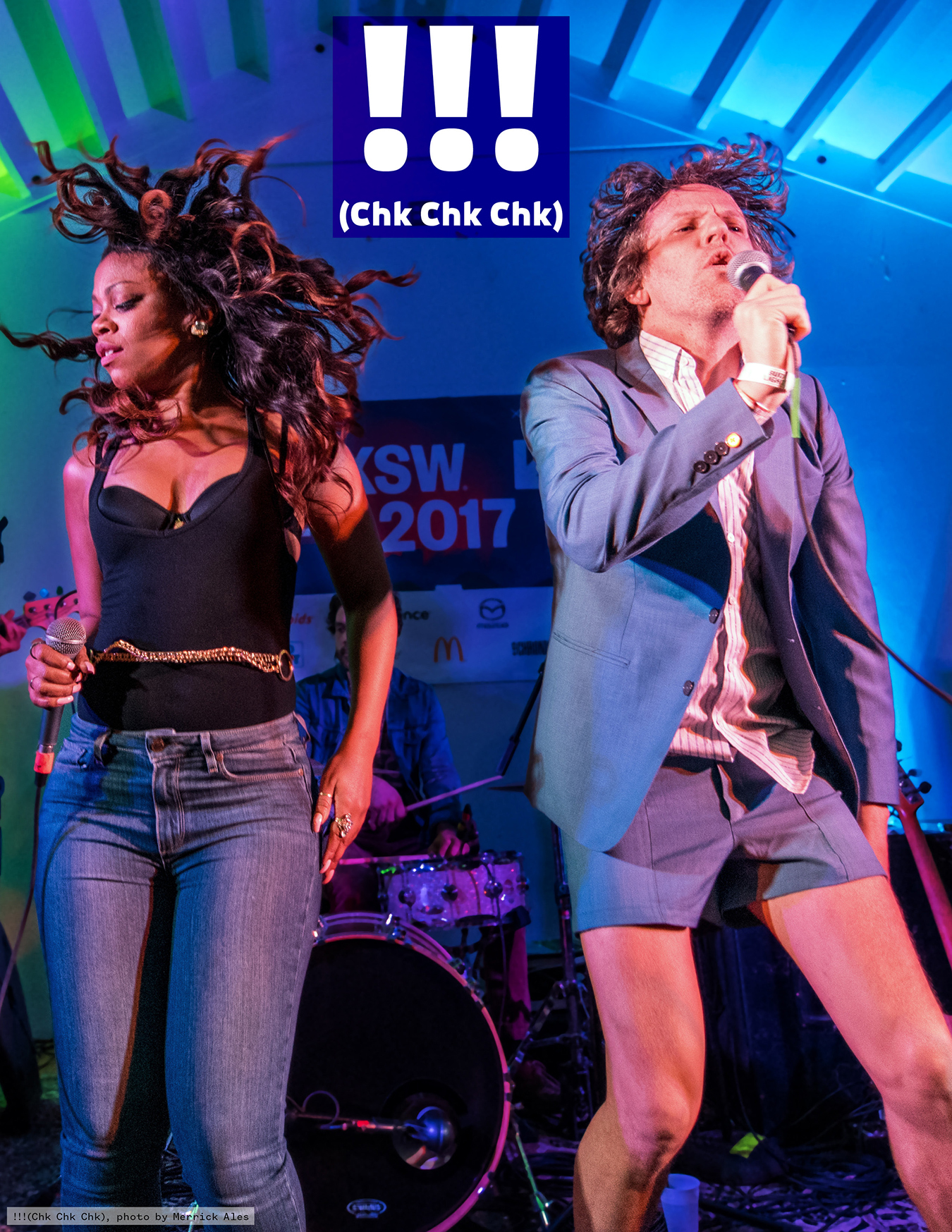
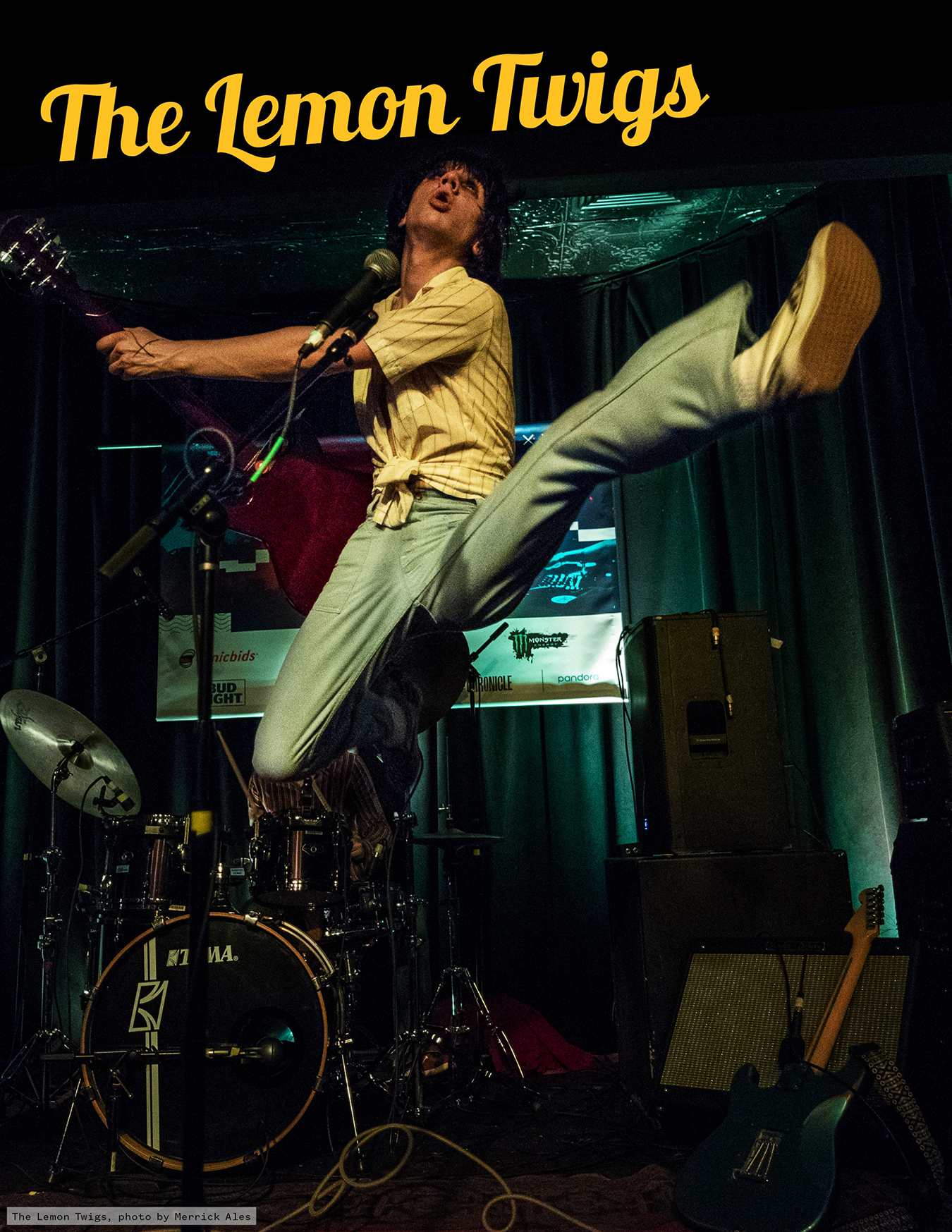
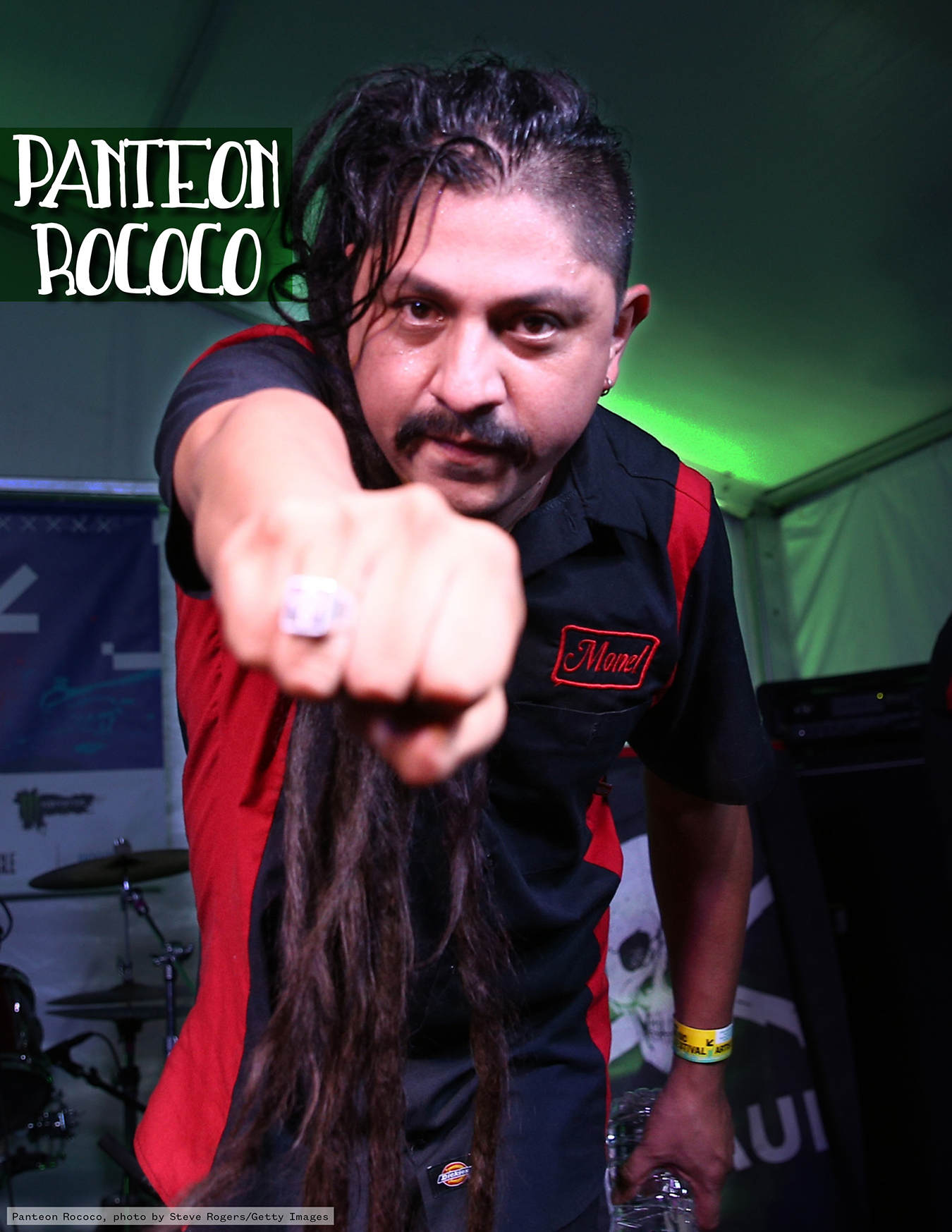
JUNE 2017
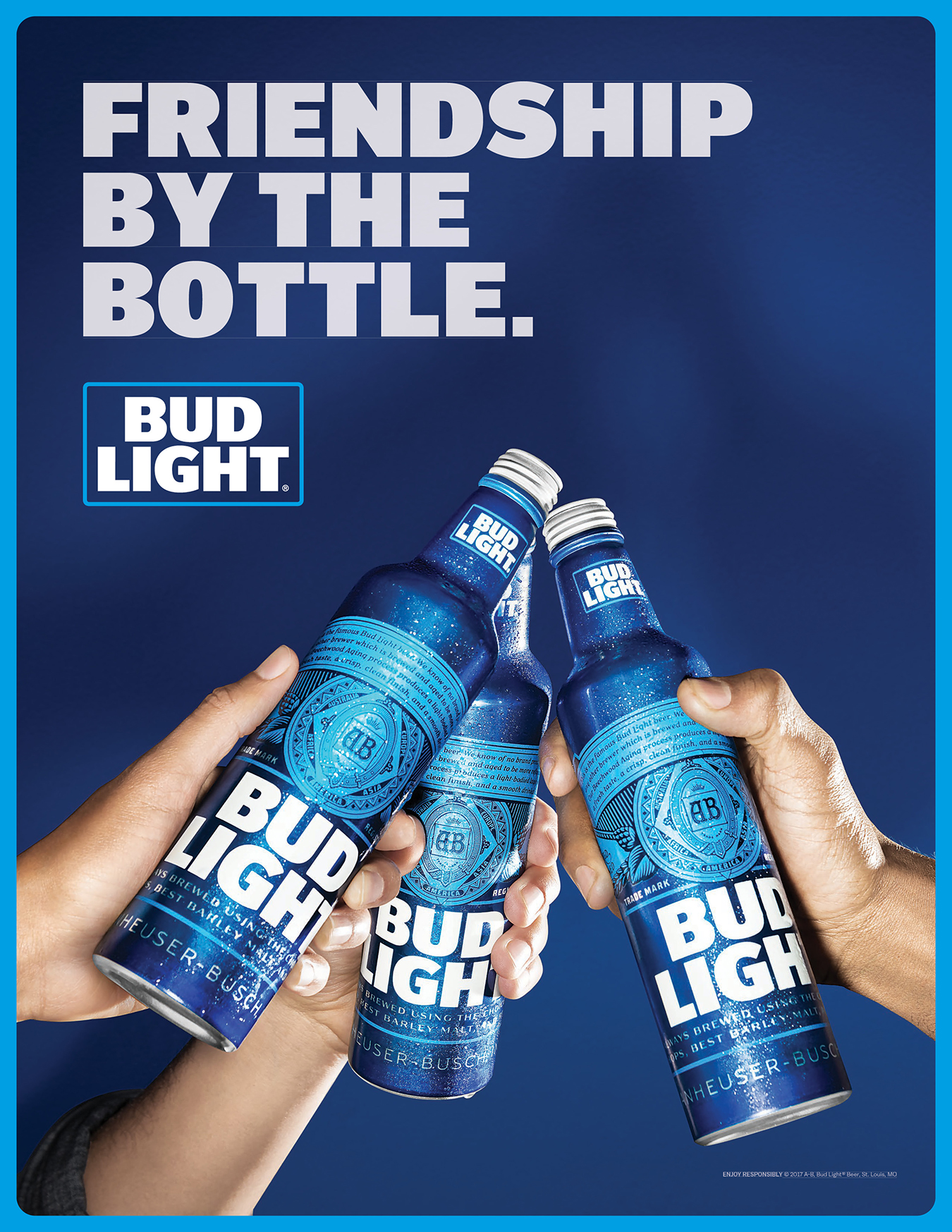
IN EVERY ISSUE
Updates from the SXSW family of events
YouTube/CNN content maestro on his law of the jungle
Features
Photos and quotes from this year’s big event
Envisioning cities of the future with data and tech
Jain, Lemon Twigs and Robyn Hitchcock took home the honors
Four SXSW films redefine women’s roles
Music and love conquer fear and nativism at SXSW show
Art installations are enhancing music festivals
Content dazzles as nascent industry develops
How and why old media formats are surviving the digital age
Music and tech collide during 24 hour marathon
How two action films let the music do the talking
Nat Geo photographer seeks elusive holy man
Volume 11, Issue 5


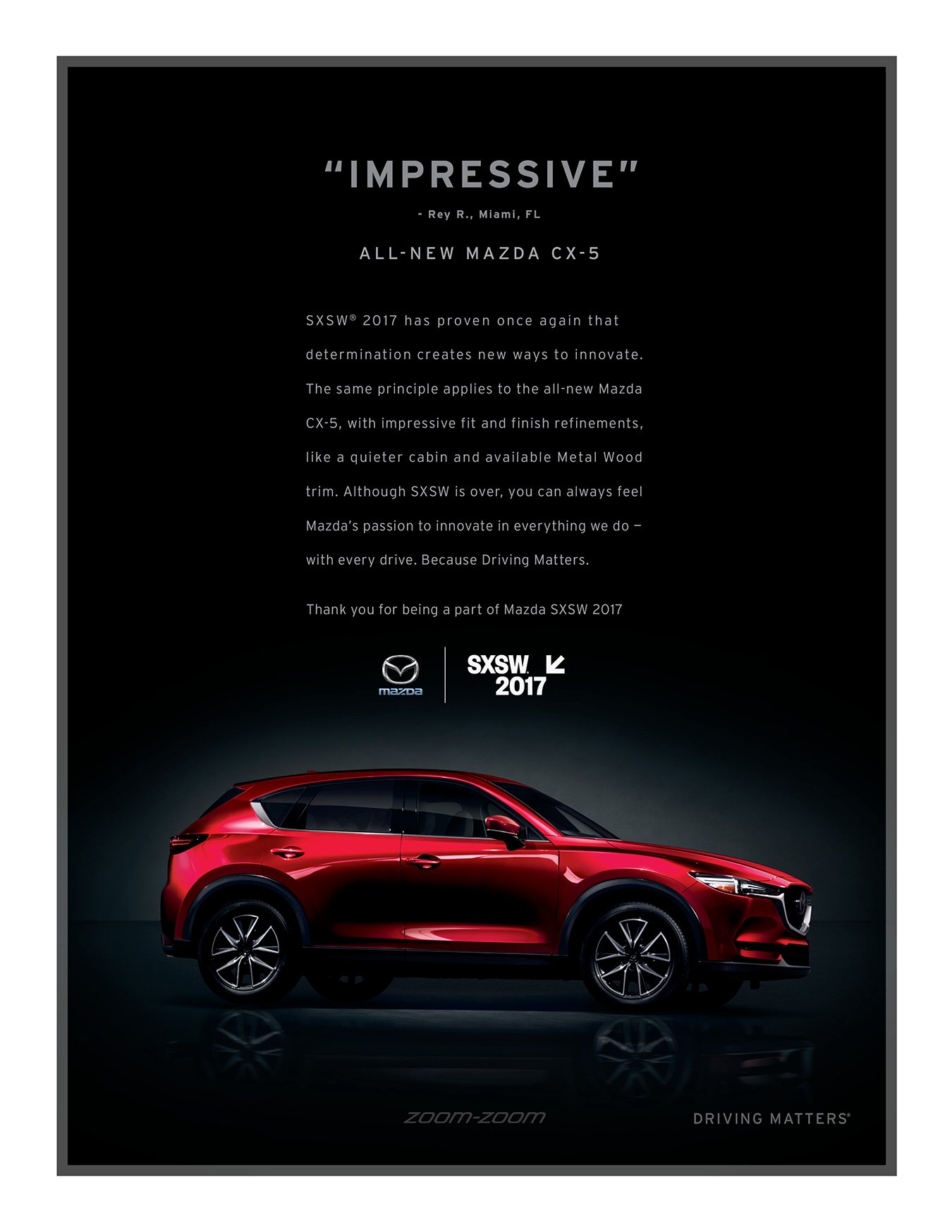
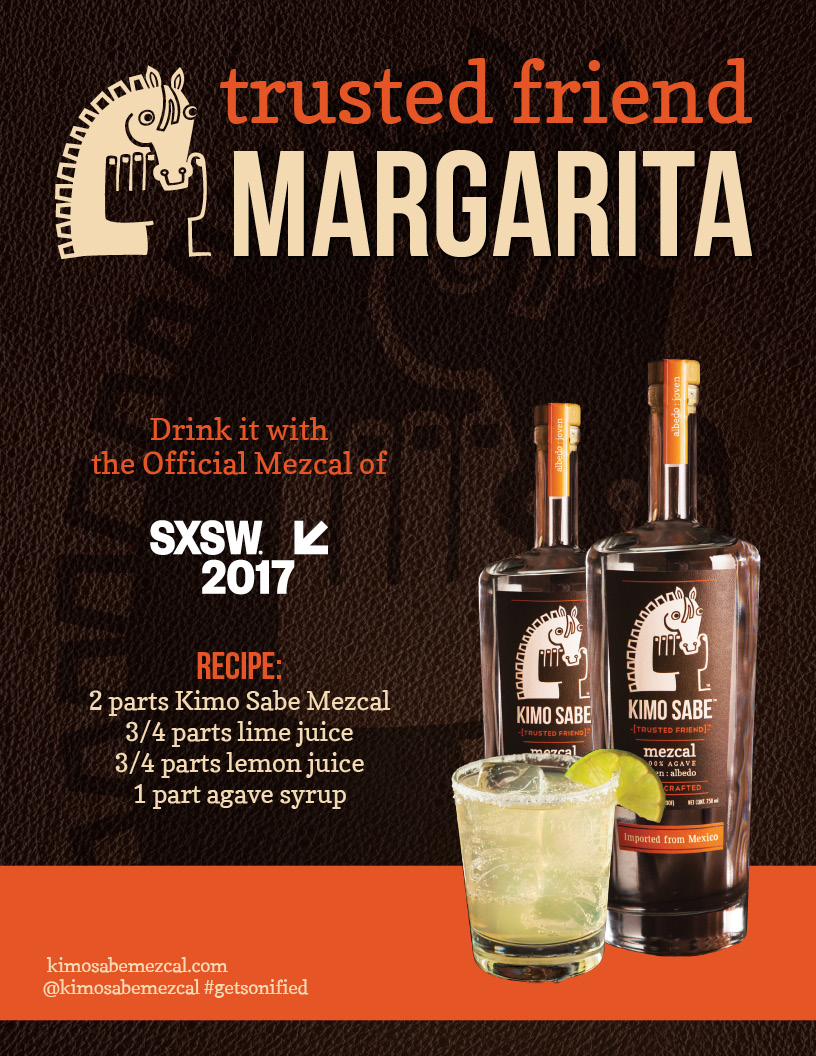

New & Noteworthy
What’s Happening Now & Exciting Things to Come!
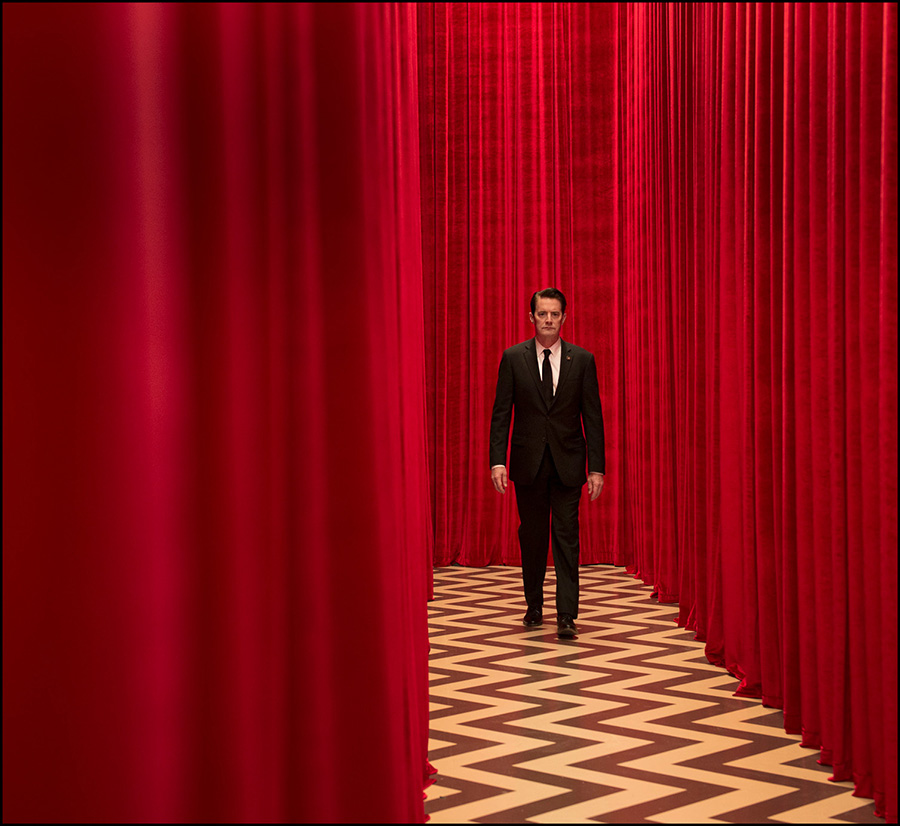
Fire Walk With Me -
Twin Peaks: The Return Premieres
In March, SXSW attendees got an early look at the new SHOWTIME® limited event series Twin Peaks, which picks up 25 years after the inhabitants of a quaint northwestern town were stunned when their homecoming queen, Laura Palmer, was shockingly murdered. Considered among the most influential television series of all time, the new version again stars Golden Globe® winner and Emmy® nominee Kyle MacLachlan as FBI Special Agent Dale Cooper. Written by series creators Mark Frost and David Lynch and directed entirely by Lynch, Twin Peaks premiered on Sunday, May 21 and can only be seen on SHOWTIME®.
Brazil’s big presence at SXSW 2017
This year, Brazil sent the second largest foreign delegation to SXSW and the largest to SXSWedu. The Brazilian film Divine Divas won the Global SXSW Film Audience Award, and Brazilian tech company CI+T won the SXSW Interactive Innovation People’s Choice Award for its work on Johnson & Johnson’s CaringCrowd. Additionally, 68 companies from Brazil secured $37 million in funding and made thousands of business contacts. Bem feito, brasileiros! E parabéns!
SXSW 2017 Featured Speakers launch Finery.com
Brooklyn Decker and Whitney Casey are garnering a lot of great press with the launch of their site Finery.com, which is changing the way people dress and shop. Finery, dubbed “The Warehouse Operating System,” captures all of your past purchases and organizes them in an online wardrobe. Perhaps the best part? Never miss a return window, while getting wishlist sale alerts and automated price adjustments.

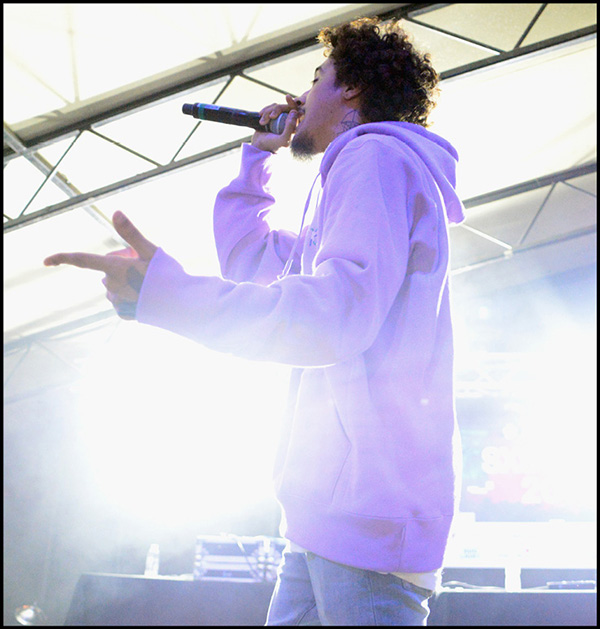
Be Brasil (Brazil) Lounge, photo by Merrick Ales
Wifisfuneral photo by
Hubert Vestil/Getty Images
Wifisfuneral Signed to
Interscope/Alamo at SXSW
Up-and-coming Florida rapper Wifisfuneral signed a deal with Interscope/Alamo Records at SXSW. After the success of his latest mixtape “When Hell Falls”, the 19 year-old artist met with Alamo Records founder Todd Moscowitz in Austin to finalize the details of the contract.
Community Service Awards
The SXSW Community Service Awards celebrate the spirit of community in Austin that we think is unique to our event. Each spring, ten recipients are recognized for their use of digital technology to help others. Each honoree receives a complimentary SXSW badge, a $1,000 grant to their favorite 501(c)(3) and a chance to spread the word about their work to the SXSW community. The SXSW Community Service Awards memorializes one of the original co-founders of the SXSW Interactive Festival, Dewey Winburne, by honoring ten individuals using technology to help others. Read more.
PanelPicker Opens
June 26!
It’s already time to start thinking about SXSW 2018! We were blown away by the innovative programming submissions for 2017, so we are excited to begin looking ahead to next season. Propose SXSW 2018 programming ideas through PanelPicker® starting Monday, June 26 through Friday, July 21. PanelPicker is the official SXSW user-generated session submission platform. This easy, two-step online process gives the SXSW community a voice in what creative and thought-provoking programming is chosen and scheduled at the SXSW Conference, SXSWedu, and SXSW Gaming. During the open application process, we encourage the community to upload proposals related to music, film, and digital technologies in variety of formats including panels, solo presentations, workshops, and more.
SXSW Conference Journalism track
speaker wins Pulitzer
In what was a turbulent year for politics and media, one reporter rose to the top for holding candidates’ feet to the fire during the 2016 U.S. Presidential election. Washington Post reporter and SXSW 2017 speaker David Fahrenthold gained notice for his reporting on candidate Donald Trump’s claims of charitable donations. Fahrenthold, who spoke on the “Good Night & Good Luck: Media in Election Years” panel, also broke Trump’s infamous “locker-room banter” video from unaired 2005 Access Hollywood footage, prompting widespread demands for Trump to drop out of the race shortly before Election Day. Fahrenthold’s efforts were rewarded this April with a Pulitzer Prize for National Reporting. Congratulations for this outstanding accomplishment!
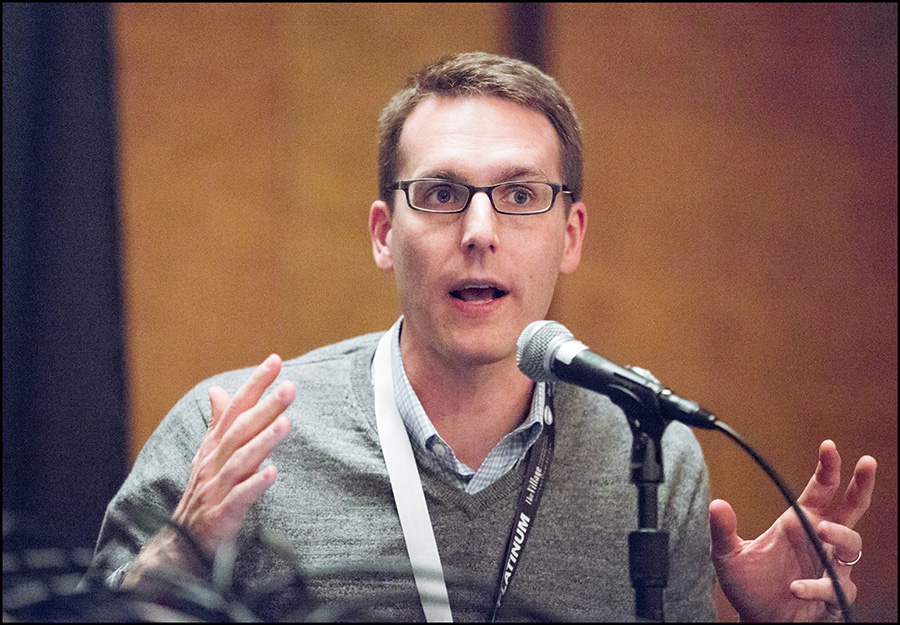
David Fahrenthold, photo by Akash Kataria

SXSW Songs Debuts International Songwriting Camp
From March 12-14, Austin’s Arlyn Studios hosted SXSW Songs, a unique songwriting camp experience for fifteen producers, writers and topliners from around the world. SXSW Songs was curated and run by a global panel of music publishing experts including Tileyard Music (U.K.), Prescription Songs (U.S.), and Budde Music (Germany).
The first edition line-up featured SIGALA, Freedo, Bham, Soaky Siren, Sophie Rose, Chiara Hunter, Matt Hartke, Nico Rebscher, Kipp Williams, Hank Solo, Wally Gagel, and Kelvin Jones, and SXSW Music Festival showcasing artists: Kučka, Linying, and R.LUM.R.
Marc Johlen, A&R Manager for Budde said, “You could feel the difference right from the beginning. All songwriters were extremely focused and excited to work on such a high international level with writers from all over the world.”
SXSW 2017 registrants also had opportunities to share in the SXSW Songs experience at a panel discussion with participants and at a well-attended playback party. SXSW Songs was sponsored by Shure, ASCAP, Gibson, Roland and Timbuk 2 and will return in 2018.
Enter Now for the 2018
Gamer’s Voice Award
This award began as a way to bring the best in indie game development to the world’s stage at SXSW. Now, in its fourth year, the Gamer’s Voice Award has grown to become one of the largest, and most impactful experiences for dozens of indie game developers and teams. With past successes such as Nidhogg, SpeedRunners, SUPERHOT, and Gang Beasts, this key part of the SXSW Gaming experience has helped facilitate growth in projects brimming with potential by fostering collaboration across several creative industries.
Austin To Get First Ping Pong Club
SXSW Sports kickoff party presenter SPiN will be opening its Austin location later this year. The Austin version of the ping pong social club will feature 14 Olympic-style ping pong tables, as well as a full-service restaurant and bar. People of all skill levels will be welcome to participate in everything from casual play, private and company events, and tournaments and leagues for the more serious players.
With locations in New York, Chicago, San Francisco, Los Angeles and Toronto, each SPiN location has its own unique local twist. Austinites can expect artists from the community to create murals, local ingredients to be used for menu items, and weekly events to host our city’s favorite DJs and entertainment talent. So sharpen up those ping pong skills!
Music Bloggers Guide to SXSW 2017 Still Available
New music discovery doesn’t have to end now that SXSW is over: The Music Bloggers Guide to SXSW 2017 is still available! The interactive design is complete with music streams and write-ups from respected music industry bloggers for 100+ Showcasing Artists who performed this year.
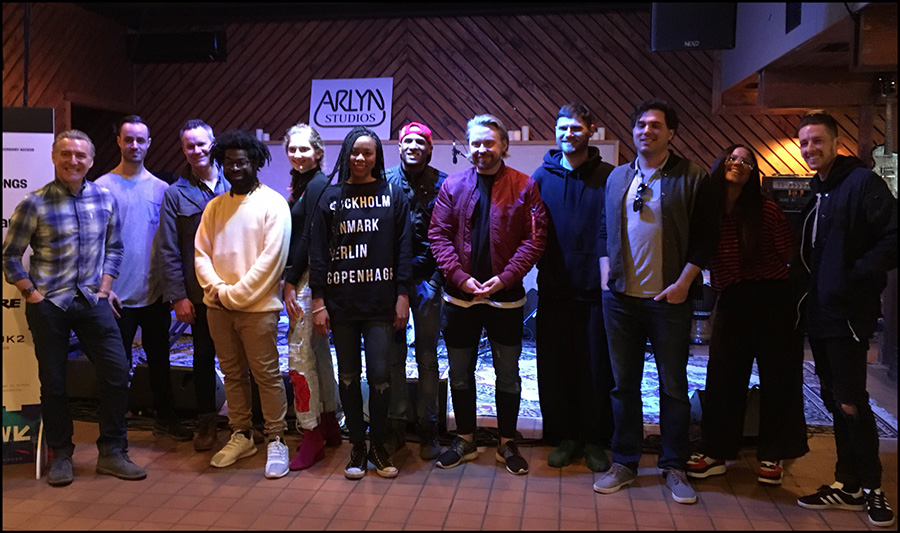
SXSW Songs, photo by Mark Gartenberg
SXSW Sports Party Ping Pong,
photo by Randy & Jackie Smith
SXSW Gaming Awards
These awards recognize the greatest titles, teams, and individuals from across the gaming industry. Since its premiere in 2014, the show has exploded in attendance to become a must-see stop for thousands of attendees during SXSW Gaming. In addition to highlighting the best that the gaming industry has to offer, the SXSW Gaming Awards ceremony also provides great entertainment with a star-studded lineup of hosts and entertaining performances. Previous emcees and guests include Jacksepticeye, Rachel Quirico, Markiplier, Janet Varney, Starbomb, Cirque du Soleil, and many more. Whether you work in the industry or are simply a fan who loves games as much as we do, take a look at how you can be a part of the magic at the 2018 SXSW Gaming Awards.
Community Grants
We created the SXSW Community Grant to recognize good work being done within local communities and help further that work by funding a project or program. This program encourages qualified 501(c)(3) public charities to apply for a grant up to $7,000 to continue or develop a new project or program. Sign up in the FAQ & Email section to find out about grant opportunities for 2018, and to be notified when the applications open.
Jam Out All summer Long!
SXSWFM, our official online radio channel, is your go-to source for music by SXSW Showcasing Artists from the past 31 years. Listen online streaming 24/7, or browse through staff-curated specialty shows on Mixcloud. There’s something for everyone!
SXSW Alums Nominated for
Americana Music Awards
Several 2017 SXSW Showcasing Artists have been nominated for the Americana Music Association’s Honors and Awards. The recent set of nominees includes Hurray for the Riff Raff for Album of the Year; Aaron Lee Tasjan, Brent Cobb, and Sam Outlaw competing for Emerging Artist of the Year; and Austin’s own Charlie Sexton, who performed at the 2017 Austin Music Awards and backed up Shannon McNally at SXSW, received a nomination for Instrumentalist of the Year. The ceremony will take place at Ryman Auditorium in Nashville during Americanafest 2017.
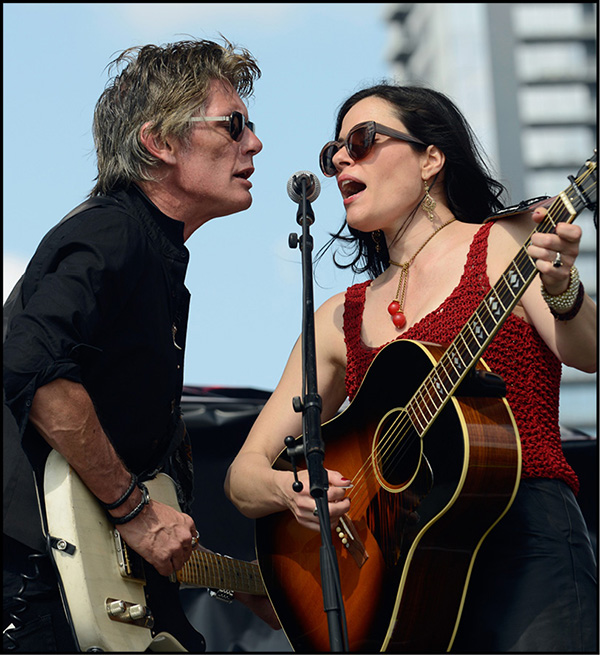
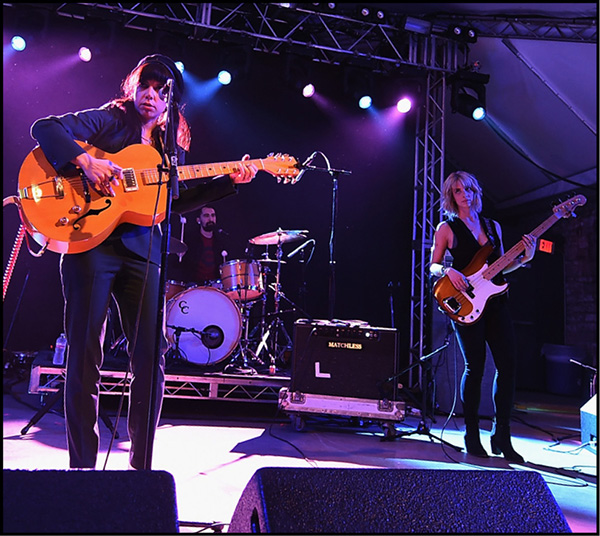
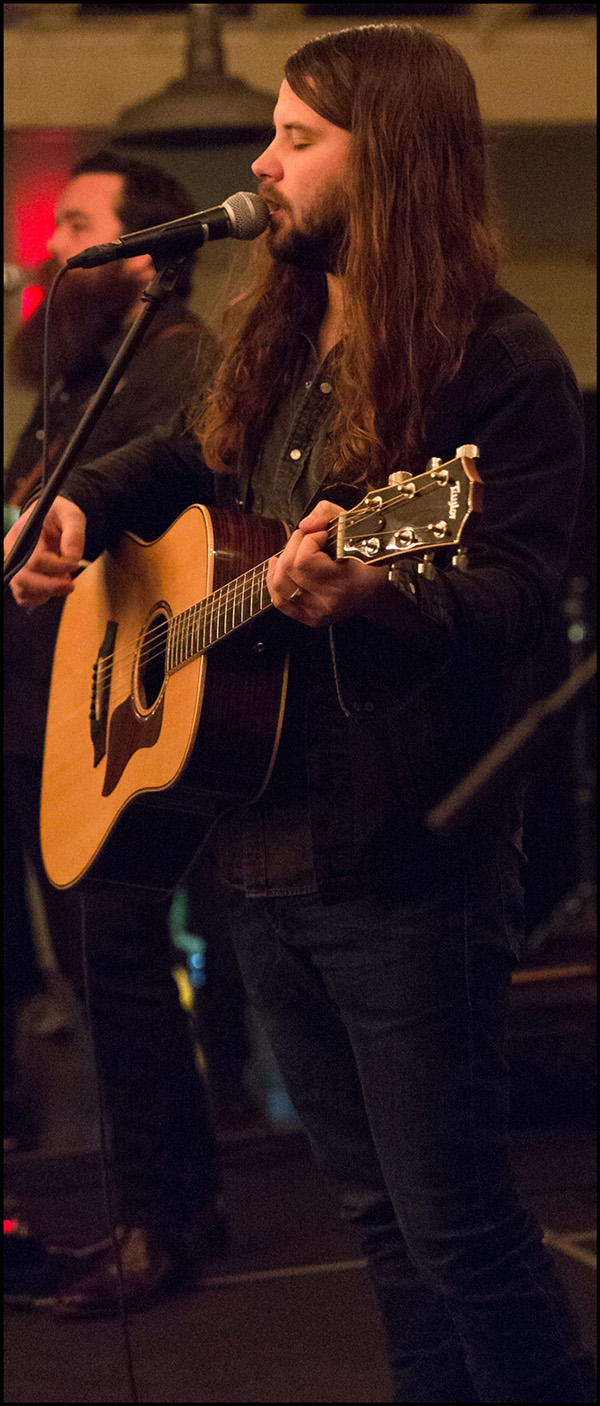

Charlie Sexton and Shannon McNally,
photo by Robert A Tobiansky/Getty Images
Hurray for the Riff Raff,
photo by Michael Loccisano/Getty Images
Brent Cobb, photo by Rob Augustynowicz
Film Keynote: Lee Daniels, photo by Errich Petersen
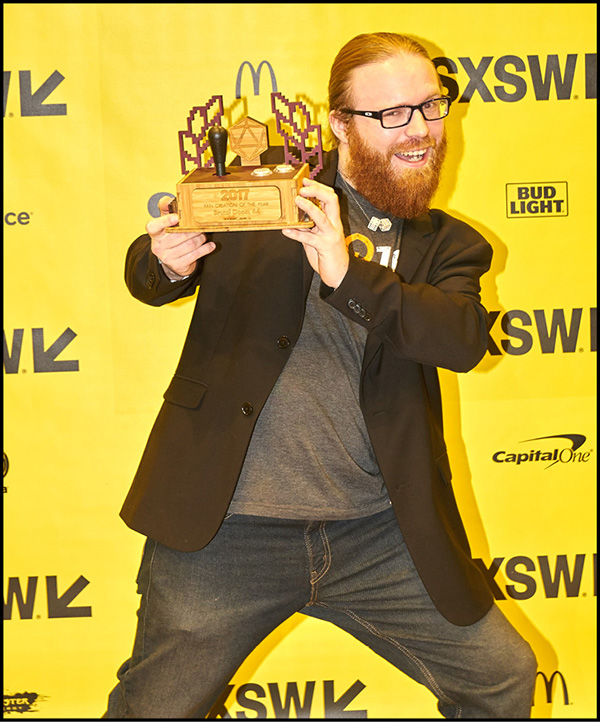
Andrew Hultshult, photo by Ron Herrman
Conference Content Now Streaming on SoundCloud
The best of SXSW is available on SoundCloud, providing a rich resource for anyone who wants to discover or revisit content from our conferences. For example, there are nearly 100 sessions available from SXSW Film 2017, including keynotes, conversations, panels and more.
SXSW Gaming
Student Showcase
Students and game development programs from hundreds of universities across the world take the gaming industry by storm each year displaying excellence and design in the games they create. Featuring the best student works across a variety of gaming fields, we’re proud to bring back the SXSW Gaming Student Showcase for its second year with some of the greatest programs and groups of students around. Click here for entry information.
fortuitous SXSW Encounters
help launch MindCotine
Out of a discussion at a wedding last fall, three Argentinian friends: Cristian Waitman, Emilio Goldenhersch and Nicolas Rosencovich, decided to combine their respective backgrounds in VR, psychology and biomedical engineering to develop a tool that combines mindfulness and biofeedback with VR technology to help people break tobacco addiction. In February, Waitman welcomed Goldenhersch and Rosencovich to his adopted home base in Mexico City, where the three developed MindCotine.
Deciding to attend SXSW, they drove from Mexico City to Austin with 500 VR cardboards in tow. Upon arrival, the first event they attended was an International Accelerator Pitch event at Casa Mexico. Their last minute appearance resulted in some Spanish-language coverage from Forbes, CNN and other Argentinean mainstream media outlets. Fatefully, also in the audience was Angel Bañuelo from Balero, a Mexican accelerator program, who offered to invest in MindCotine and invited them to take part in GSVlabs’ Pioneer Accelerator Program in Redwood City, California. Since the offer came only four days before the program started, the MindCotine team drove straight back to Mexico City to pack up and head for Silicon Valley, barely a week after they had first left for SXSW.
Next, MindCotine is launching its Kickstarter campaign on World No Tobacco Day (May 31) in hopes of generating its first 10,000 users. Says Waitman: “None of this would be possible without SXSW, and we feel this story must be shared to encourage other entrepreneurs from Latin America to come.”
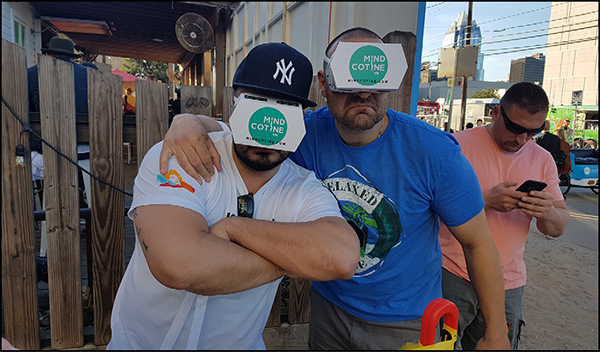
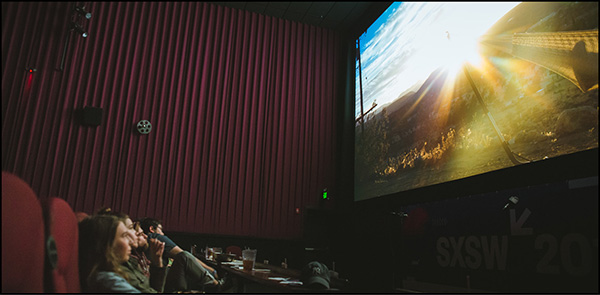
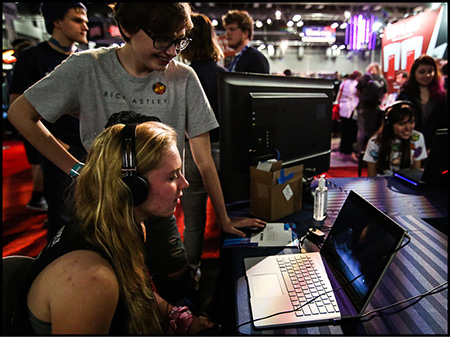
Photo by Randy & Jackie Smith
SXSW Film 2018
Call For Entries
It’s already time! The Film Call For Entries will open on June 26. Submission fees are at their lowest when the call opens and increase incrementally throughout the season. The earlier you submit, the more you save. Read more and sign up for notifications. For even more detail, browse our Submission FAQ.
SXSW Art Program
The SXSW Art Program showcases experiential and visual artworks that apply emerging technologies and immersive environments to spark discovery, inspiration and connection. Incorporated into our broader ecosystem of creativity and innovation, the art program serves as a launching point for collaborations and discussions around the role of visual and digital media arts in culture, technology and the public realm. Open call for entries begins Monday, June 26th. Click here for more information.
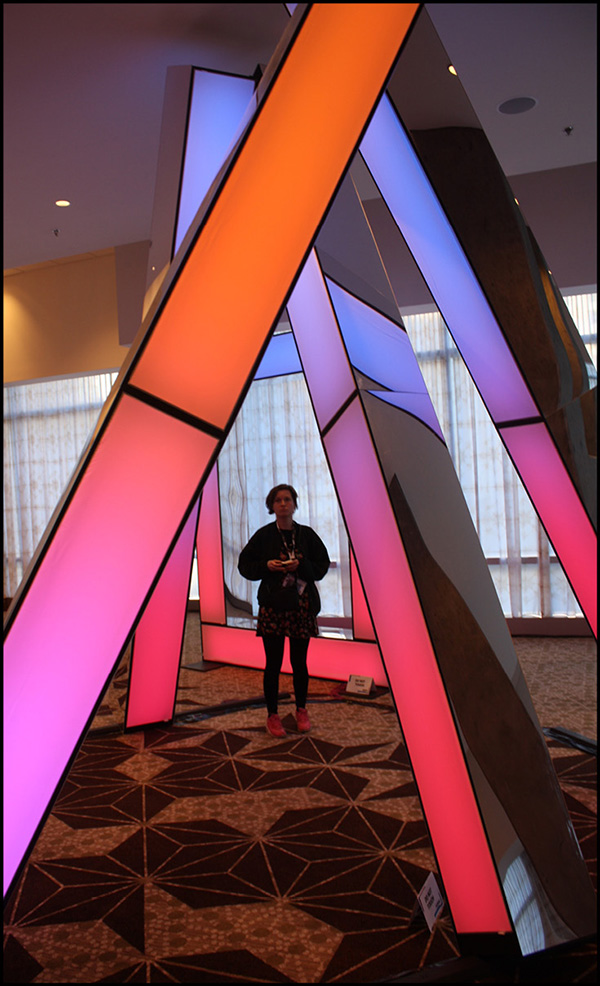
Photo by Carol Watson
Keep Up With Film Alumni Year-Round
Throughout the year, we cover upcoming releases from SXSW Film alumni. Including theatrical releases, streaming/on-demand, blu-ray and other media, you can find the information on our blog, in posts to our social media platforms on Twitter, Facebook and Instagram, and on aggregated posts.
SXSW Accelerator
Returning for its tenth year in 2018, this event showcases some of the global startup ecosystem’s most exciting, innovative and cutting edge technologies. Companies present the latest ideas and advancements in ten categories to a panel of industry experts, early adopters, and representatives from the investor community. We invite you to attend this incredible pitch event as we highlight startup companies’ most impressive new innovations.
SXSW Gaming
Pitch Competition
This pitch competition connects gaming industry veterans directly with independent game
developers in a private atmosphere to help build great pitches and offer developers extensive feedback, tips, and assistance on how to move forward. A panel of industry experts will award one entry the title of “SXSW Gaming Best Pitch.” If you’re a developer looking to gain recognition for your current project and are willing to take the next step toward making it a reality, then the Pitch Competition is a can’t-miss opportunity.
Remembering
Jonathan Demme
We were saddened by the death of acclaimed filmmaker and great SXSW friend Jonathan Demme, on April 26 at age 73. After starting out as a writer, producer and director with B-movie kingpin Roger Corman during the 1970s, Demme earned widespread attention as an independent director during the ‘80s with such projects as Melvin and Howard, Something Wild and the brilliant Talking Heads’ concert film Stop Making Sense. He later had a run of success with major studio films, including 1991’s The Silence of the Lambs, which garnered five Academy Awards including Best Picture and a Best Director honor for Demme himself, as well as 1993’s landmark AIDS drama Philadelphia, for which Tom Hanks won the Best Actor Oscar.
Demme was an early champion of Austin as a hotbed of independent film and in 1980, worked with Austin Chronicle Editor and SXSW co-founder Louis Black to compile six short films, which he later screened as Jonathan Demme Presents: Made in Texas, at New York City’s Collective for Living Cinema in October 1981.
Demme was also a familiar face at SXSW over the years. In 1998, he world premiered Storefront Hitchcock, a concert film featuring Robyn Hitchcock (a 2017 Grulke Prize Winner) before presenting The Agronomist in 2004. Two years later, he returned to screen Neil Young: Heart of Gold, the first of his three documentary collaborations with Neil Young, and participated in a keynote interview with Young at SXSW Music. 2009 featured the World Premiere of Neil Young Trunk Show, the second of his Young docs. He most recently visited in 2015 for a 25th anniversary screening of Made in Texas and during the accompanying session, Richard Linklater confessed that seeing two of its short films as a young man in Houston inspired him to move to Austin.
“Jonathan Demme loved South By Southwest because he was addicted to creative energy,” explains Black. “Over the years we probably talked about music more than film, so he was delighted by every aspect of it ... I’ll always remember going to a SXSW day party to see The M’s, because they were a band he was excited about. Jonathan brought along Neil Young, Elliot Roberts and me. Although, obviously, far more were astonished to see Young walking about, those that recognized Demme were just so pleased … In every way with its abundance of people, music, film, and creative energy SXSW was perfectly suited to Jonathan who enjoyed the hell out of it.”
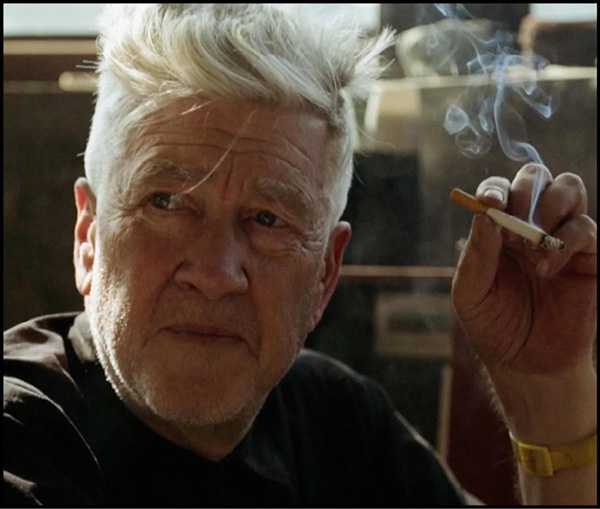
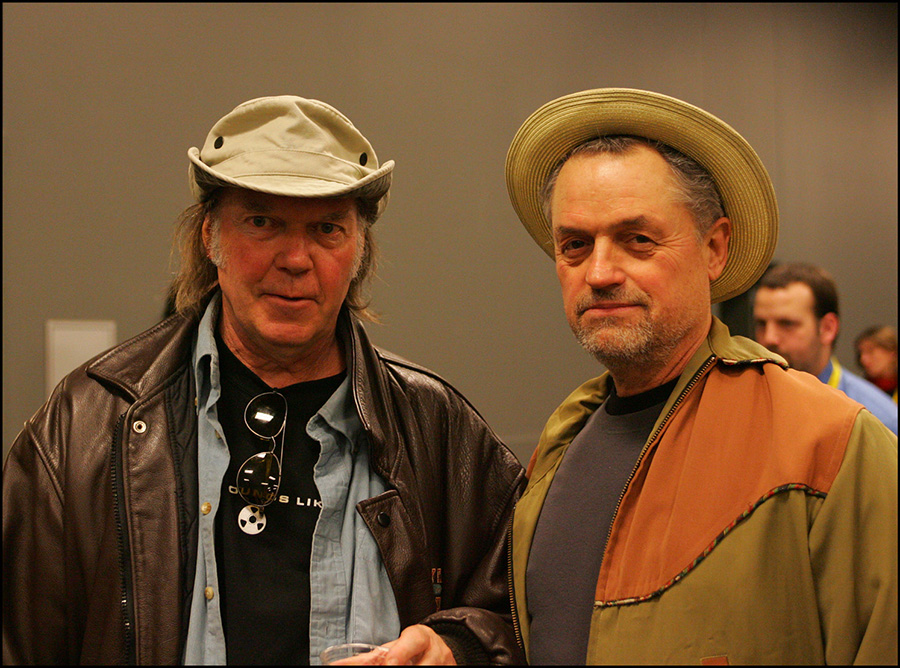
Niel Young and Jonathan Demme SXSW 2006, photo by Gary Miller
David Lynch - The Art Life
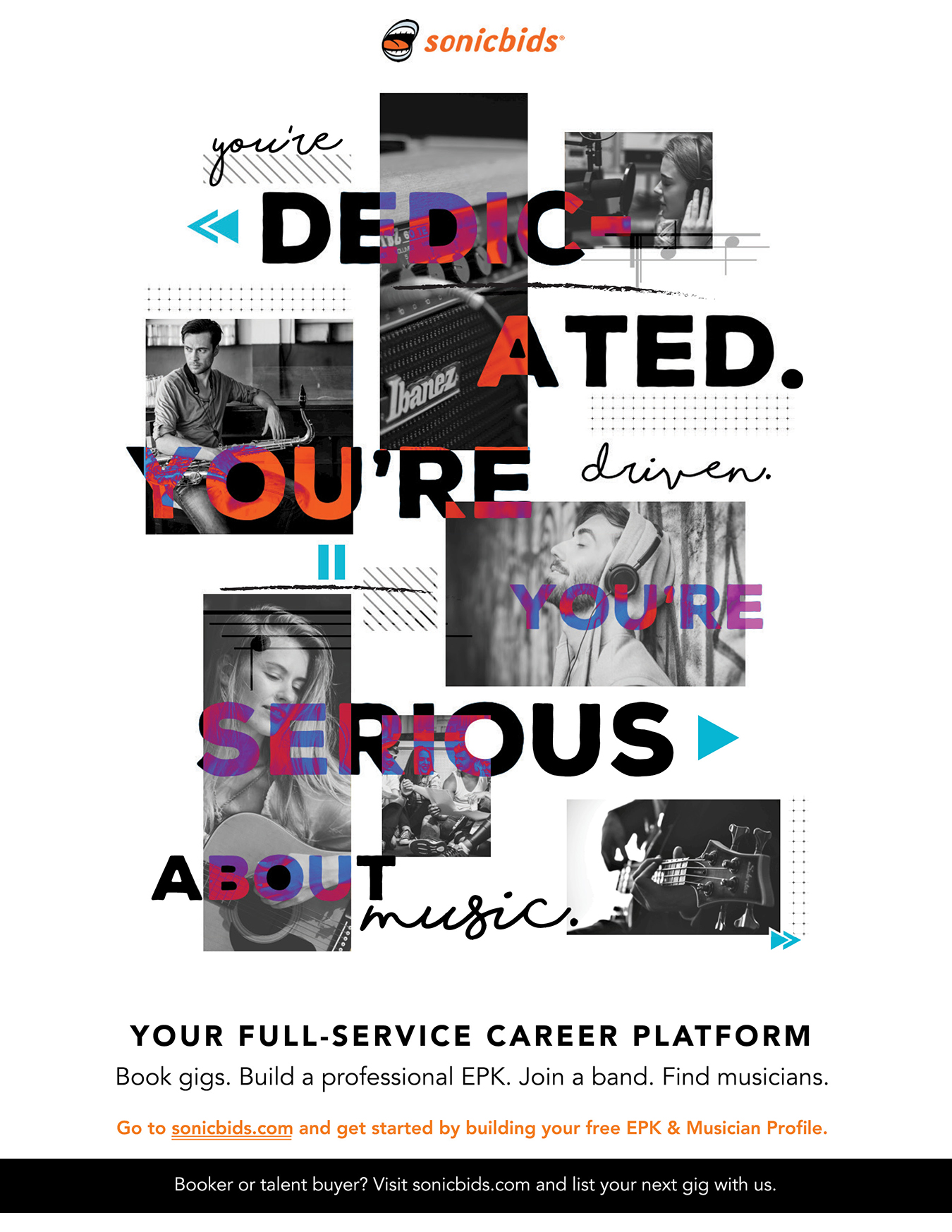
The last place anyone wants to live is a dumb city, so today’s most innovative metropolises are taking creative steps to address problems with a level of tech ingenuity usually reserved for Silicon Valley. But when so many cities have trouble even engaging the public on local civic issues, what does it mean to be a smart citizen?
“It could be someone who doesn’t own a car anymore, who’s using connected vehicle services or autonomous vehicles. It could be someone who is running their home much more efficiently. The two biggest costs that have people have are housing plus transportation,” says Sherri Greenberg, a professor at the University of Texas at Austin’s LBJ School of Public Affairs, adviser to Austin’s Mayor Steve Adler, and a SXSW 2017 panelist.
At this year’s SXSW, mayors and other representatives from cities including Phoenix, Long Beach, Louisville and Pittsburgh spoke about their cities’ efforts to use technology to improve civic services and evolve the quality of life of their citizens. Yet in many ways, it is Austin that is writing the blueprint for smarter cities, especially through one of the most futuristic ideas to hit the country in a century: driverless cars.
“Austin is the Kitty Hawk of driverless cars. Not only did the first truly driverless trip take place here in 2015, but Austin is hosting the first large-scale experiment with driverless cars,” says Austin Mayor Steve Adler. “We’re also doing a pilot program with delivery robots in downtown Austin. The potential that driverless vehicles have to transform how we get around could fundamentally change our lives, and sooner than we think.”
The dream of a robot chauffeur still sounds like something from The Jetsons cartoon, but unbeknownst to most citizens, even their simple day-to-day commutes actually create data sets that help propel the driverless revolution, and in the meantime, decrease traffic burdens. One of the benefits of understanding these traffic patterns is that their analysis guides zoning decisions, which has led to designing more comprehensive neighborhood pockets of offices, residential, retail and entertainment. Once fully realized, these reduce the stress on cross-city traffic arteries.
“From a city point of view, one of the things that’s always been considered a holy grail is origin destination graphs,” says Ron Baker, IBM Distinguished Engineer for Smarter Cities.
That type of locational information can be used in countless applications. When cross-referenced with 911 and 311 calls, a city can better identify and service hot spots related to crime, street repairs and public disturbances. By analyzing additional data points such as time, weather and day of the week, a smart city can find better ways to solve almost any problem.
The most prominent (and possibly unlikely) hub of data collection is Santander, Spain, a city of 170,000 that’s been equipped with 12,000 sen
sors to measure everything from parking trends to park irrigation. The findings are available not only to government agencies, but also to any programmer with a good idea to propose.
Recording this type of data, from traffic patterns to accident reports, might seem like it would compromise privacy, but cities takes steps to ensure the raw data is encrypted and never sold. Unlike almost every mobile app that is capable of tracking its users, even including innocuous games like Angry Birds, the analytics produced aren’t reverse engineer-able, so companies can’t look at the aggregate result and determine details about an individual.
This type of passive data collection is invaluable to civic improvements, but the idea behind smart cities isn’t just to leverage citizen habits. It’s also about finding methods to bring more people into the conversation. One way that Austin hopes to spur participation is by adding a virtual component to city council meetings, so that people can log in and have their voices be heard without having to be physically present in a forum that can be far from their homes or requires more time than they have available.
Another important element of smart cities involves the private sector. Ask any business owner their biggest gripes about dealing with local government, and permitting will likely be high on the list. Austin is notoriously cumbersome in this department but hopes to learn from other cities like Boston, which hosted a recent hackathon specifically related to permitting. Goals like better identifying permit requirements, online application management and transparent review systems may not be the sexiest areas of research, but they are crucial to helping businesses grow.
Since so many elements of this new style of city planning draw directly upon data sets gathered by new technologies, progress wouldn’t be possible without strong private sector support. Austin’s solution is the CityUP™ program, a consortium that brings together or58nizations like the publicly-owned utility company Austin Energy and Capital Metro, the city’s public transportation provider, with tech players that include IBM and Amazon. The organization counts Greenberg and Baker as board members, and although both stress that this is just the beginning of a long road, CityUP is just one of the many forward-thinking partnerships that hopes to transform Austin.
Still, Adler stresses that integrating technology is a tool to achieve a greater goal for the city: “It’s easy to get excited about the shiny pennies—the driverless shuttle buses, the delivery robots—but what will really make us a Smart City, rather than just a city with smart stuff, is if we use technology to build ladders of opportunity to those communities that have historically been left behind. If we can use technology to expand opportunity, then we will truly be a Smart City.”
Austin’s Smart City Report Card:
How the Texas Capital Combines Civics & Tech
By Dan Gentile

Photo by Todd Arena/Graphic Stock
Grulke Prize Winners
Span Styles & Generations
By Linda Laban
know me, but if I can catch just one person’s attention and they like me, then that’s enough. I don’t want to have too much pressure: I just want to do what I do.”
The Lemon Twigs think they had at least one fan at SXSW. “There was one guy in an audience with a stick with a couple of lemons pushed through it. We thought that was a great way to show appreciation,” D’Addario laughs.
Hitchcock’s appearances at SXSW previewed songs from his April–released self-titled album, which is laced with forthright, passionate opinions on the troubled state of our planet right now. “I’m not known as a social commentator. My work, some people don’t understand it at all,” he adds. “But we as a species are in a deep moral and spiritual crisis. The situation is very acute: a lot of us acknowledge we are all imperiled by this toxic alliance of the superficially inclined and the ill-informed. Especially now, when we live in a world where cartoon characters get elected to government.”
Hitchcock remains a passionate artist with plenty to say: not deliberately as a way to court attention, but as a personal and socially relevant truth and great songwriting. Still, though he can’t plan or “storyboard” his career, as he puts it, he agrees staying socially relevant is an important factor. “Is relevance relevant?” he fires back rhetorically. “Yes, it is.”
Hitchcock will stay busy through the year touring his record, and he’s working on a track with Graham Coxon for “a movie, or TV; I don’t know which.” The Lemon Twigs have dates booked through the summer but are already at work recording tracks at their Long Island home studio in between tour dates for their second album, tentatively titled Go Back to High School. Following her break, Jain will return to touring with dates across Europe throughout the summer, along with a return to the U.S. for Lollapalooza and other dates in the fall.
“I wonder, how do they calculate such a thing?” says D’Addario about how a winner for the Grulke Prize is chosen from hundreds and hundreds of laudable artists. Jurors for the Grulke Prize include music critics, industry professionals and SXSW staff, many of whom knew and worked with Brent, a much-loved figure in the SXSW and Austin music worlds. Hitchcock, who first played SXSW in 1993 and returned many times, is among them.
“Brent used to sort me out. He would help me with where I could play, where I would stay,” he recalls. “There were no record companies involved, so he was the person I went to and said, ‘OK, Brent, where can I play?’ Having an award that’s dedicated to him makes it special for me.”
Now in its fifth year, the Grulke Prize has become a touching finale to SXSW Music. It’s a feather in the cap of the three artists or bands singled out to receive it, of course, but as it was developed in honor of SXSW’s longtime Creative Director Brent Grulke, who passed away in 2012, the prize is a reminder of the passion that Grulke, the winners, and so many participants and attendees have for music.
This year’s winners are Long Island retro-pop duo The Lemon Twigs (Developing US Act), French world pop singer-songwriter Jain (Developing Non-US Act), and Nashville-based, English-born folk pop singer-songwriter and iconoclast, Robyn Hitchcock. Hitchcock’s long tenure in music—from the mid 1970s in The Soft Boys, then leading Robyn Hitchcock and the Egyptians until the early 1990s before going solo, and the fact that the 63-year-old is still just as viable as ever—placed him as this year’s Career Act.
Of the three artists, only one, Hitchcock, had ever been to the festival before, let alone played it. The Lemon Twigs, New York City’s worst kept secret, already had huge buzz in their hometown and on the indie pop scene when they released their kaleidoscopic, 1970s-influenced debut album, Do Hollywood, in 2016, but they hadn’t ventured to SXSW before this year.
“We were still really naïve,” says Twigs frontman Brian D’Addario. “We didn’t really know about the impact of playing festivals; we didn’t really know about SXSW’s impact and we didn’t have a team in place before, so we didn’t think to try and play it.
“We didn’t know what to expect from the festival. It was chaotic and cool, and we were very grateful to be singled out among all those bands for the prize. It was a total and complete surprise,” he adds.
Jain echoes that chaotic-cool sentiment: “I didn’t really know what to expect. It was amazing and intense,” she says. “We don’t have this kind of festival in France. There were so many bands to hear around town, and the weather was like summer. So it was good for me when back home it would be raining.”
Jain, real name Jeanne Galice, released her debut, Zanaka, in France in 2015, working hard in Europe and promoting the album to double platinum status in her homeland. Zanaka, which blends world music into pop, was released in the U.S. last fall, and Jain’s SXSW appearance was part of a busy campaign that saw her U.S. debut in February on The Late Show With Stephen Colbert, and watched her embark on her first American tour through March and April. Still, playing SXSW was a standout regardless of the prize.
“I very much love festivals,” says Jain from Paris during a spring break. “People are just experiencing this big event together. They don’t
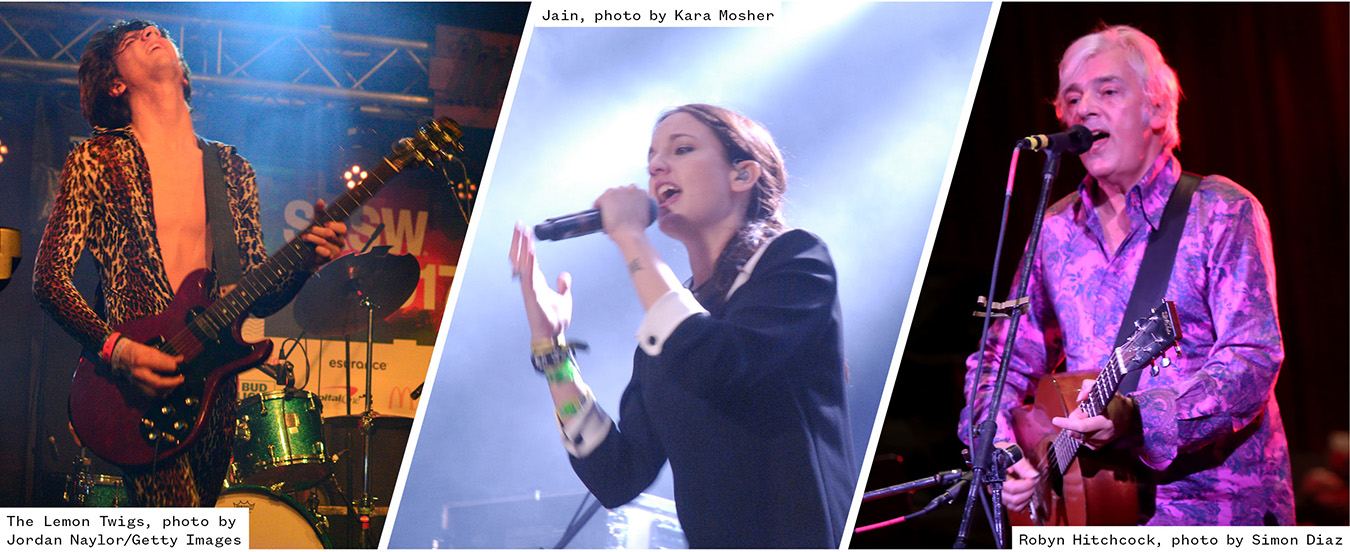
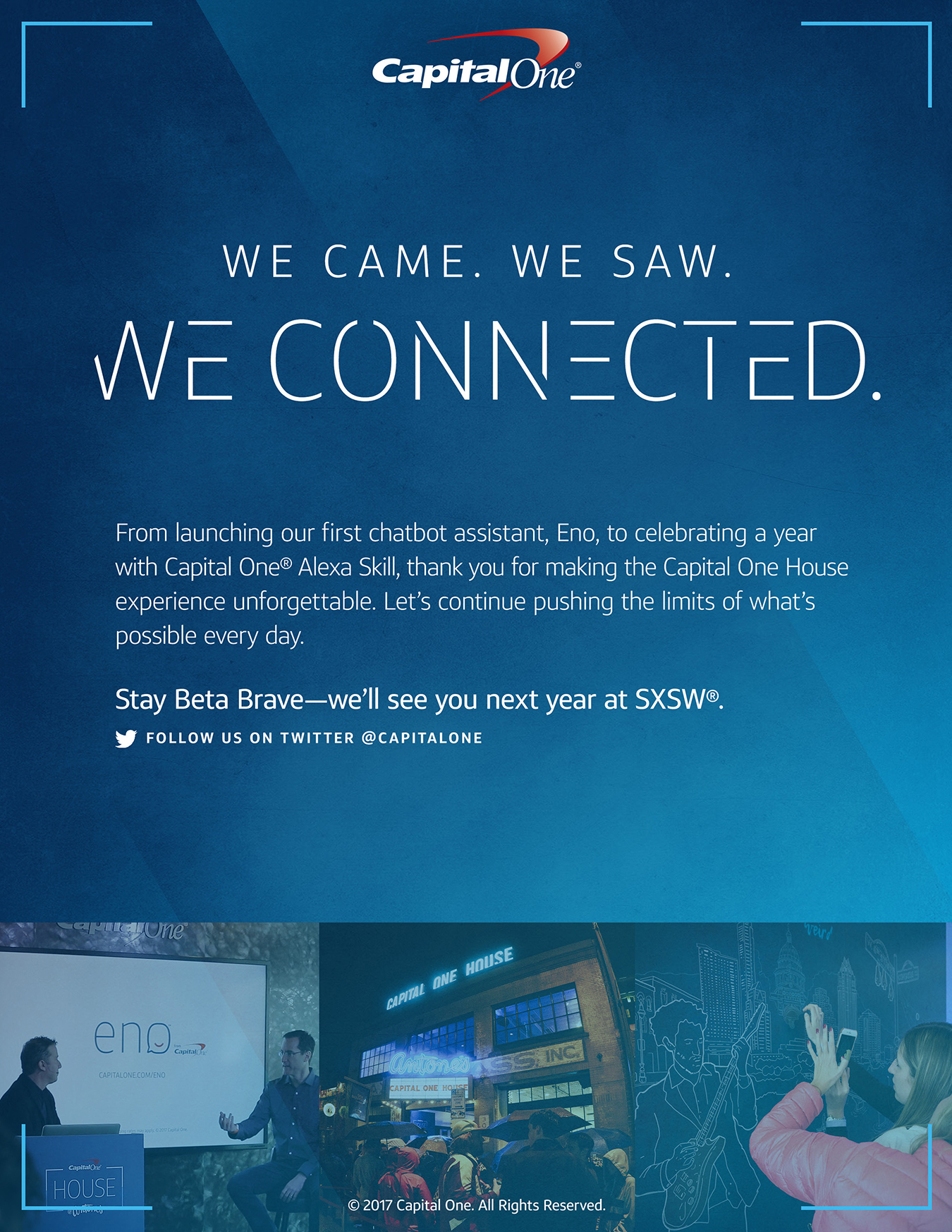
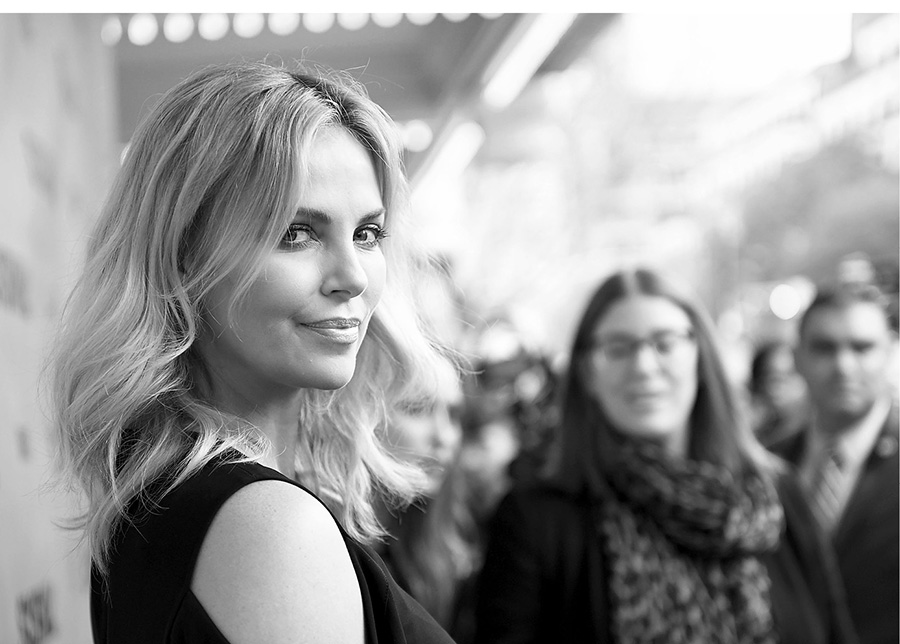
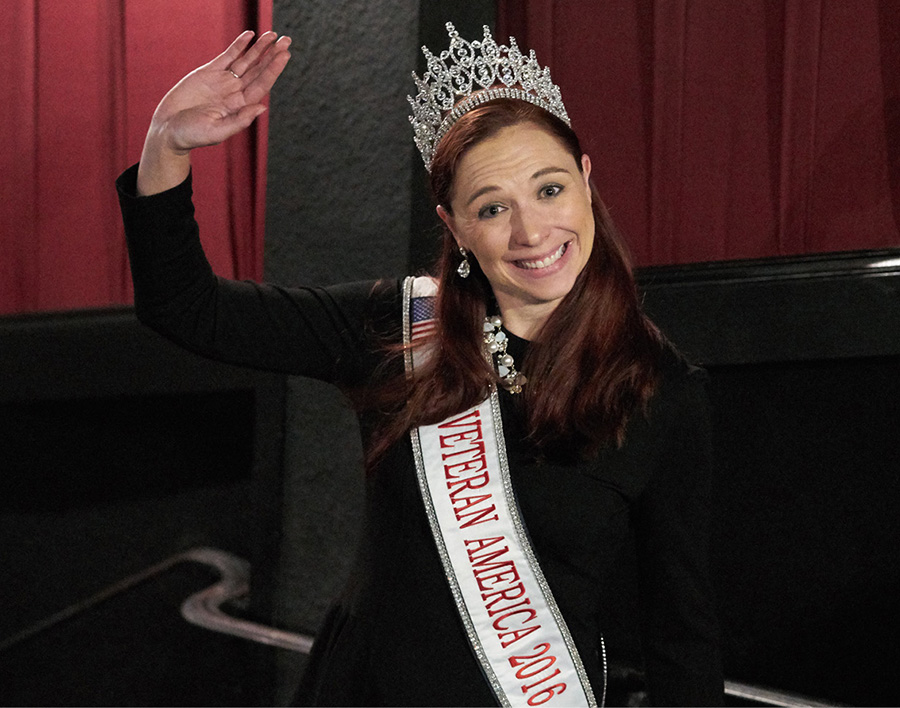
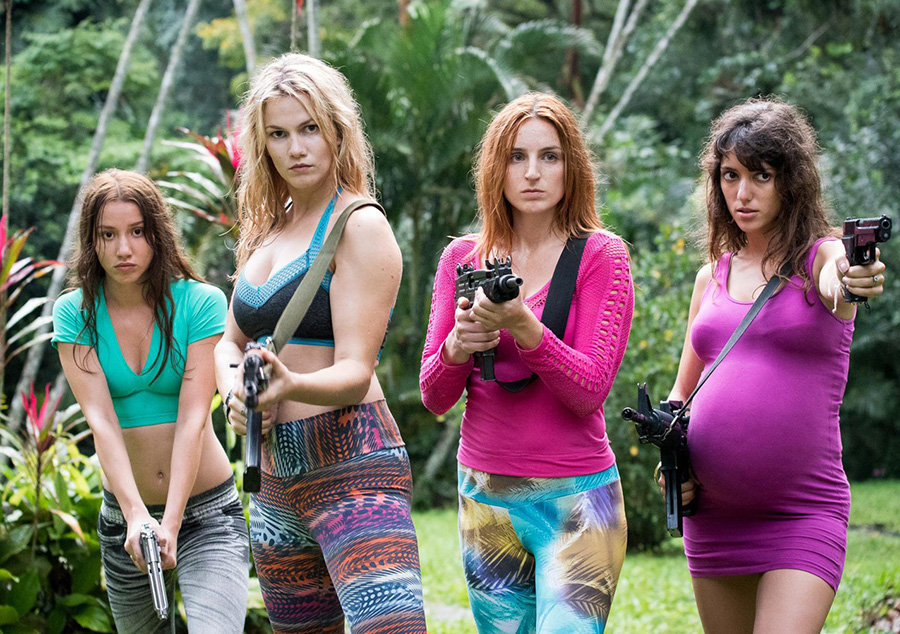
Badass Women
Did Badass Things at
The SXSW Film Festival
By Britt Hayes
In film, the “strong female lead” is often shorthand for a certain kind of woman: She’s strong, of course, both mentally and physically, and though she’s usually seen kicking various forms of ass, you’ll never witness her crying over it. To some degree, she is a cinematic variation on Gillian Flynn’s “Cool Girl,” an impossible ideal projected through the male gaze. Over the years, the “strong female lead” concept has become reductive, a one-dimensional insinuation that a woman’s strength is limited and can be typified—but there’s nothing typical about the women featured in four of this year’s acclaimed SXSW film selections.
On its surface, Atomic Blonde probably comes the closest to meeting those basic requirements, with Charlize Theron as an elusive and remarkably steely MI6 agent sent to Berlin to investigate the death of a fellow spy during the Cold War. Theron’s Lorraine Broughton is a tough act, the kind who makes sure there’s never anyone left to follow. The eponymous “atomic blonde” may bear the simplistic hallmarks of a strong female lead, but she coolly subverts them—and directly challenges the male gaze that created them—in a studio film that has the defiant attitude of one with a much smaller, more fearless budget.
Consider Atomic Blonde and its deceptively multifaceted lead to be a gateway to the world of badass women, like the fierce quartet at the heart of Going to Brazil. The rowdy French film from director Patrick Mille (Bad Girl) follows four old friends reunited by a wedding, but their blissful, party-heavy vacation takes a hard left turn when they accidentally kill someone—someone with ties to a crooked politician, which leads the women on a wild journey involving the mob, kidnapping and loaded weapons. Going to Brazil is a film with big, bold characters and a quick wit matched only by its pacing. Even so, each of the four leads feels fully-developed, with inner lives and perspectives of her own. Though initially introduced as various types, those superficial attributes are deceptive; in other words, looks can be misleading.
The same might be said for the subjects of the startlingly poignant documentary Served Like a Girl, which tracks five female veterans vying for the title of Ms. Veteran America. Definitely not your average beauty pageant, it is a competition that raises funds and awareness for the increasing number of homeless female veterans.
According to director Lysa Heslov, these women “have been to hell and back,” all haunted by traumatic events in ways that are simultaneously unique and unifying, giving them a distinct sense of empathy and a remarkable sense of purpose. Still, Heslov makes it clear that her primary goal “was to make sure these women were never portrayed as victims. That would have really pissed the veterans off,” she says. “And they are not women you want to piss off.”
Her surprisingly comprehensive documentary profiles both organizers and competitors, an array of women from different backgrounds and experiences, united by both profession and gender in a field where the latter sometimes works against the former—which makes it all the more inspiring to watch them participate in a competition that emphasizes the very thing that is often perceived as a weakness, while proving that feminine strength takes myriad forms. To Heslov, a badass woman is one “who is not afraid to use her voice with strength, passion and confidence, but,” she adds, it’s also “a woman who celebrates and feels confident in her femininity and beauty.”
Valerie Weiss, director of The Archer, would agree with that valuation. Being a strong woman, she says, “means not being afraid to embrace all that is feminine about yourself while pursuing your goals and dreams to the bitter end.” Such is the case for Lauren Pierce, the queer protagonist of Weiss’ thrilling drama, and whom the director affectionately describes as a “Western film hero.”
That is the most typical thing about The Archer’s namesake, a troubled young woman sent to a treacherous “reform camp” for girls after she experiences an abrupt, violent outburst. While there, she forms an intimate bond with a fellow detainee, and the two plot their harrowing escape from an oppressive institution run by a bow-hunting warden hell-bent on breaking these young women and making them feel entirely helpless. As Weiss explains, he’s “symbolic of a society that tries to subvert women’s power even when it is so obvious to us that we are powerful, and we prove it over and over again.”
Although equipped with her own individual story and experiences, Pierce shares much in common with the women in the aforementioned films. “To me,” Weiss says, “female strength is a confidence in your abilities, insights and conviction about what is right, independent of what and who society is telling you to be”—which could so aptly describe many of the women featured here, and perhaps more than a few in your own life.
Though seemingly at odds, these concepts of strength and femininity are not mutually exclusive. Using means as varied and engaging as the subjects themselves, these filmmakers show women as complex and complicated individuals, each possessing an inner network of hopes and thoughts and ambitions; each with competing ideas and qualities held simultaneously. That their stories still, after all this time, feel like an act of defiance is all the more reason for you to see them.
Charlize Theron attends the Atomic Blonde premiere at
SXSW 2017, photo by Matt Winkelmeyer/Getty Images
Served Live A Girl, photo by Ron Herrman

Bailey Noble and director Valerie Weiss at the The Archer
World Premiere, photo by Hutton Supancic/Getty Images
Going to Brazil
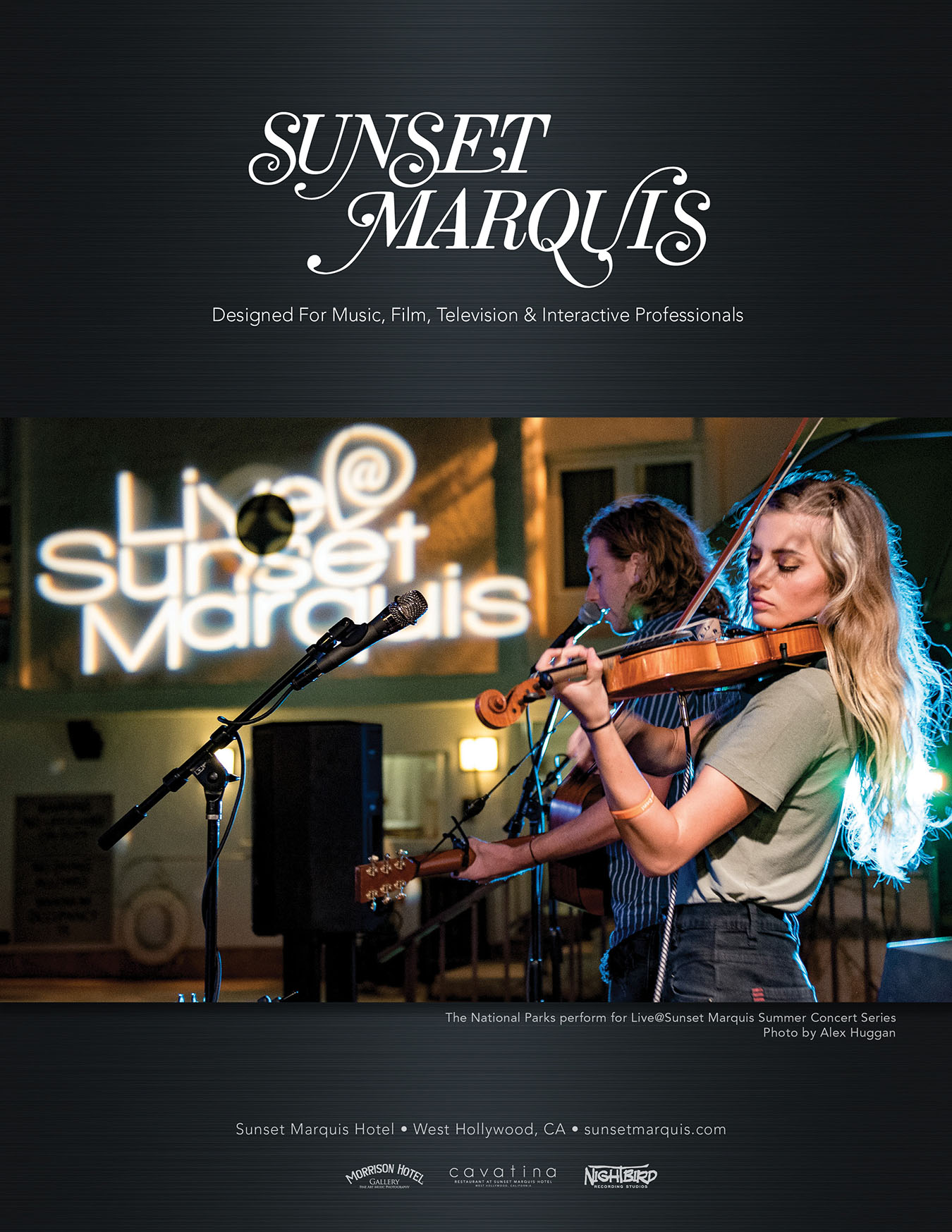
The final lineup reflected the organizers’ commitment to diversity, not just in the range of ethnicities present, but also in the contrasting musical styles represented. “Just because we were programming artists from the seven banned countries didn’t mean they all had to play traditional music,” says Froebel. “The final lineup had amazing scope. Yes, there was the traditional Iraqi music of Dena El Saffar and Mohsen Namjoo’s blend of ancient Persian music and contemporary blues, but there was also Bassel & The Supernaturals’ infectious neo-soul and the hip hop of Libyan artist Kayem.”
Any concerns that ContraBanned, with its serious message, might conflict with the St. Patrick’s Day party atmosphere at SXSW were quickly dispelled. The positive reaction of the audience was clear, as the powerful stories of the assembled artists were shared amid a spirit of celebration. Iranian-American artist Mamak Khadem brought everyone together in a traditional circle dance. South Sudanese rap artist and former child soldier Emmanuel Jal fired up the crowd with his anthem “My Power.” Naked from the waist up and adorned with white war paint, he spoke out against anger: “Those who have voted for Trump have fear… we will win because we fight with love.”
Somali-Canadian sister act, Faarrow (Iman and Siham Hashi) provided the night’s emotional highlight. The pop duo, who escaped the civil war in their homeland as young girls, now act as spokespeople for the UN Refugee Agency. Sporting t-shirts emblazoned with the slogans “Refu-She!” and “Extra Power,” they electrified the audience with their cover of the Fugees’s “Ready or Not.” “Shout out to the Fugees for making it OK to be a refugee, and making it cool” said Iman.
Do one-off events like ContraBanned have lasting impact? Are artists guilty of capitalizing on political crisis to gain exposure, as some skeptics assert? When questioned, most of these artists expressed a desire to use their music to give voice to the faceless bogeyman that the Trump administration is targeting.
“I am not here because I want to be, “ said Emmanuel Ja. “People are still dying in South Sudan. There are children in refugee camps. Dead bodies talk to me. I can’t run away from the responsibility of representing my country ... I see my life as a work of art that I create to spark consciousness.”
What is the role of the artist in turbulent times? The election of Donald Trump posed this question to the world, sparking a wave of protest as people laid down their smartphones, pressed pause on Netflix and invoked the spirit of the sixties by going on marches and writing protest songs.
This was the underlying question behind the ContraBanned: #MusicUnites showcase at SXSW 2017. Conceived as a response to Trump’s divisive travel ban, ContraBanned embodied the idea that while politics divides, art unites. Musicians with roots in the seven nations banned by Trump’s since-overturned January executive order took to the Palm Door on Sixth stage to celebrate their cultures, share experiences and send the message that hate will not triumph over harmonies.
The showcase was the brainchild of immigration lawyer Matthew Covey and award-winning radio host Marco Werman, who worked for six weeks to bring their idea to fruition. The aim was to show America what it would be missing if voices from these nations were silenced.
“We hadn’t done concert promotion for a few years, but the first thought that came to my mind when I heard about the travel ban was ‘how do we respond?’ ” said Covey. “I felt the same way many Americans did ... How can I use my skills and contacts to find a meaningful response to what my government is doing?”
Fusing politics and music is nothing new for Covey and Werman, who have both spent their long careers exposing injustice and championing new talent. While Covey has fought behind the scenes to help artists obtain visas to travel and perform in the U.S., Werman’s weekly show on Public Radio International, The World, showcases stories of activism and sounds of protest from around the globe.
ContraBanned was actually based on an idea the two had during the final days of the George W. Bush administration when, over a few beers, they hit upon the idea for an “Axis of Evil” showcase. “We thought it would be fun to bring together artists from the countries deemed part of the ‘Axis of Evil’ [after 9/11] by the Bush administration,” remembers Covey. “But we couldn’t find a North Korean artist who we could bring to the U.S., so the idea faded. After the news of the travel ban broke, I called Marco and said ‘now’s the time.’ ”
An advisory board of industry experts was assembled to help book performers, raise funds and handle promotion. The tight timescale created huge challenges, but many people, such as festival producer Boo Froebel, were happy to devote time and energy to a project with such a unifying purpose. Early on, the decision was taken to feature artists with roots in the banned countries who were already resident in the U.S. or Canada. Plans to bring the Iranian electronic artist, Ash Koosha, over from London had to be shelved after issues with his visa.
A Kickstarter campaign was launched in late February, alongside private fundraising efforts, to generate enough money to cover all the artist and production costs. A crowdfunding target of $15,000 in 15 days was set and quickly exceeded. “I came up with a budget that was a bit daunting,” admits Froebel. “We couldn’t in good conscience ask these artists to [pay their own way] as they weren’t already planning to be at SXSW. This was a response to a lot of hate and misunderstanding directed at them; it would have been adding insult to injury if we had not been able to cover their expenses and pay them a small fee.”
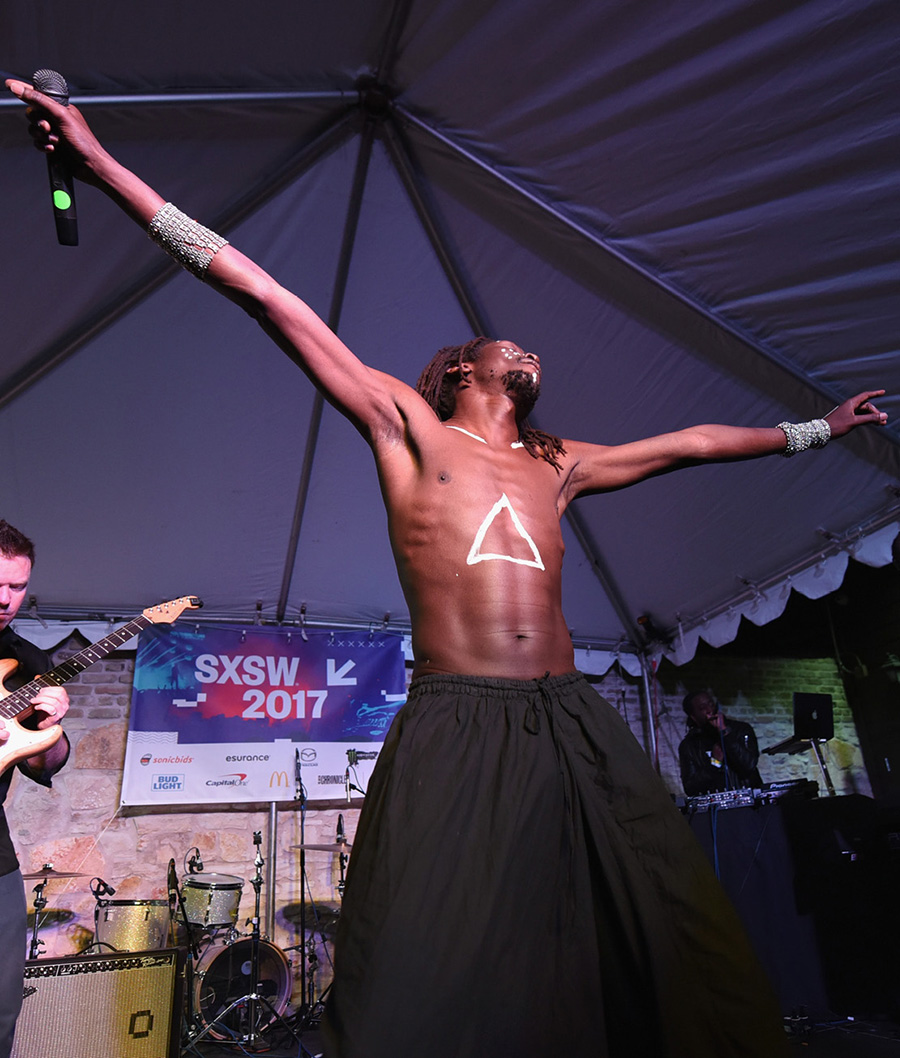
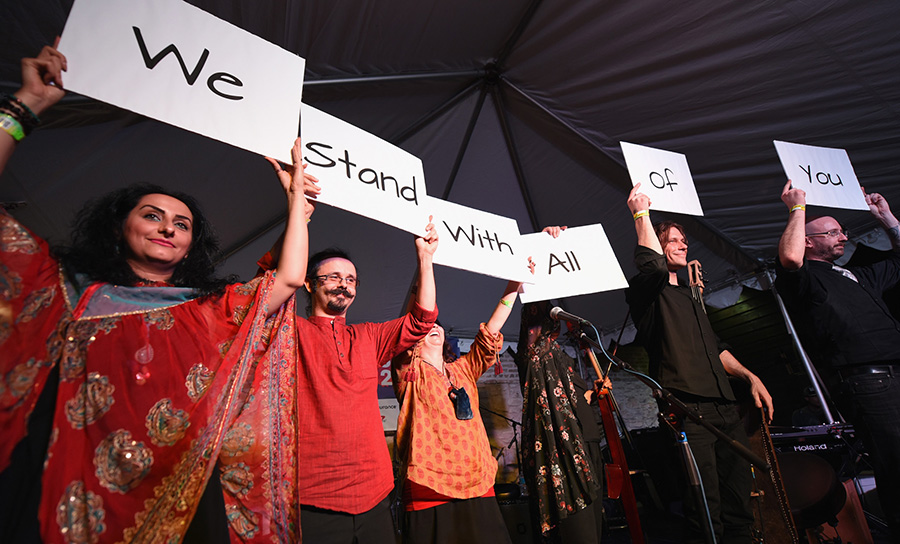
ContraBanned Showcase
Puts Art Over Politics
By Serena Kutchinsky
Emmanuel Jal, photo by Katrina Barber/Getty Images
Photo by Katrina Barber/Getty Images
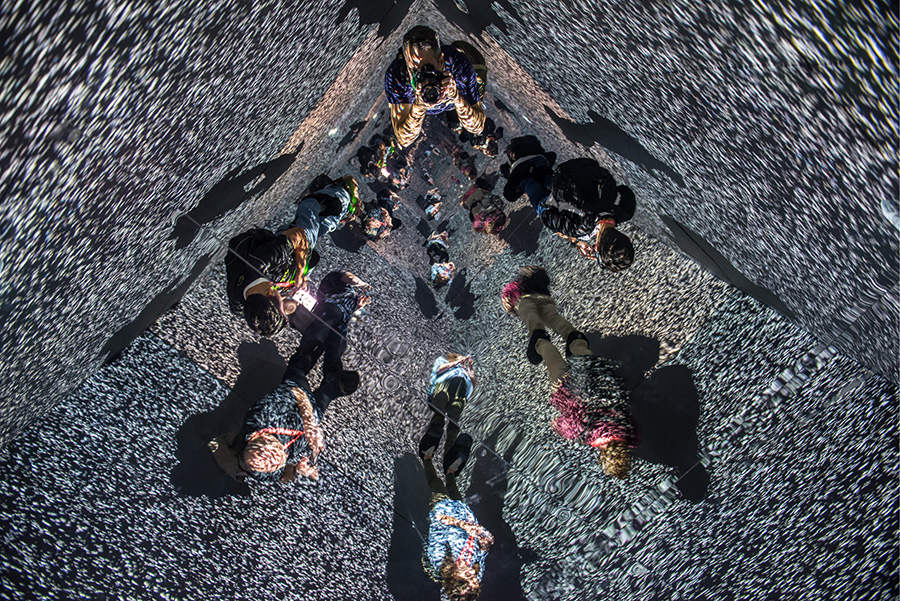
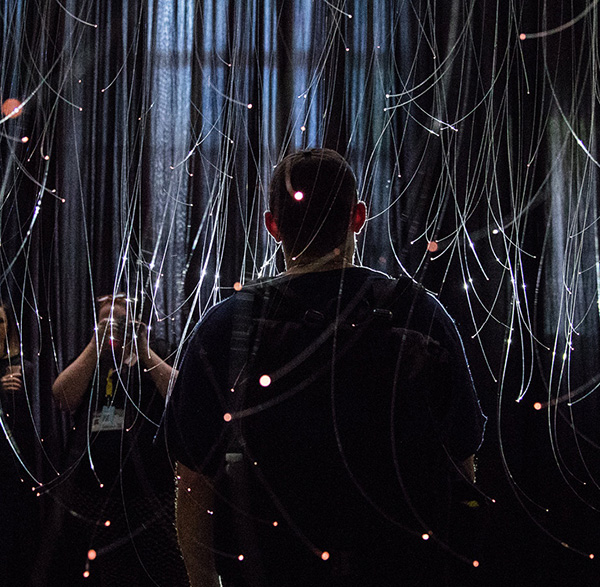
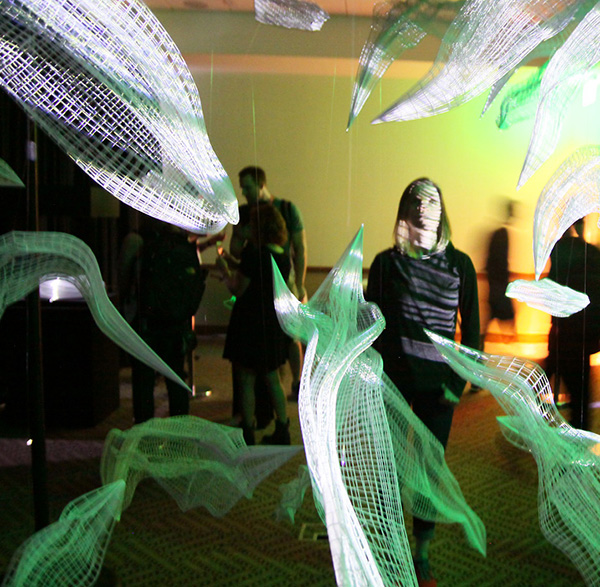
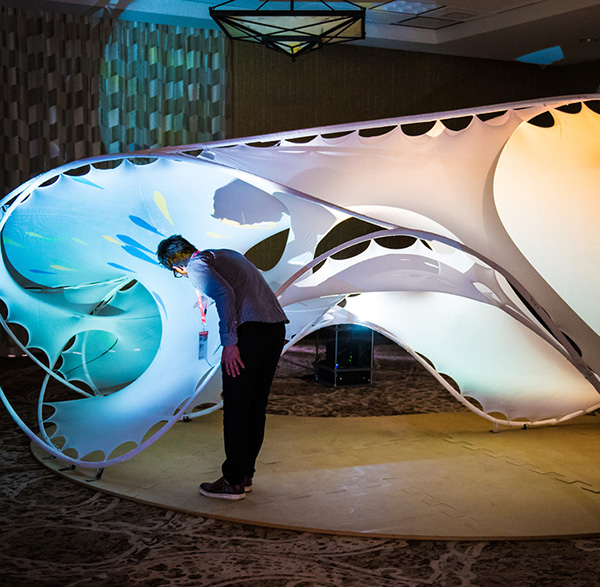
Music & Art Create New
Festival Experiences
By Rob Preliasco
Verstand’s oeuvre comprises large audio/visual works that rely on manipulations of light and sound. His “ANIMA” installation, for example, is a plastic sphere illuminated with ever-changing imagery projected from within. Using video mapping, motion sensors and a custom AI routine, its imagery reacts to the audience. Stand calmly, and its imagery will appear calming; move suddenly or erratically, and the orb will respond to that visually. It’s an exploration of how humans interact with machinery and artificial intelligence. Importantly for the festival circuit, it is also something that large numbers of people can engage with at once.
Verstand, who also performs as an electronic music artist, said he has noticed increasing overlap between his two disciplines: “I definitely noticed an increase in demand for artworks and audiovisual installations at music festivals over the past few years … I think this might have something to do with [the fact that] the form-factor of current installations can carry a similar energy to a music performance, because of their combination of light, sound and interaction.”
Multi-sensory interactivity is Czetwertynski’s goal for artworks at Day for Night. “It’s about making things big and relevant to a large crowd,” he says. “The art installations integrate, most of the time, a sonic aspect just as much as the stage experience uses visual aspects. They merge sound, vision and space into this unique kind of experience that’s hard to translate into any other field.”
Artists exhibiting at the festival are usually excited to create something new on a large scale, Czetwertynski says. Some visit the site in advance, while others make do with photos and 3D models while preparing their work.
“People don’t transport something they’ve already done,” he says. “They make a new piece or a new version of a piece that is just for us. It’s a sort of rare opportunity when you’re working in this field to have such scale, so we try to exploit it as much as possible.”
As a visual artist himself (he creates media sculptures where sounds and projected images augment physical objects), Czetwertynski hopes that the growing convergence of visual art and music can break down barriers.
“Contemporary arts have been very much defined by the media they use, whether it’s painting, sculpture, installation, film, etc. …” he observes. “In that sense, there has been a lot of categorization of different fields. I think this is about underscoring the fact that they’re not so separate.”
Visual art is supposed to be found in museums, while music festivals take place in empty fields, right? That paradigm is starting to change as festivals attempt to set themselves apart in a competitive marketplace. With large-scale art installations at Coachella, hybrid festivals like Australia’s Splendour in the Grass and Houston’s Day for Night, as well as the SXSW Art Program, the lines that demarcate music and visual art are beginning to fade. Artists seem to like it that way.
Alex Czetwertynski, visual arts curator of the three-year-old Day for Night Festival, said that artists in the two disciplines are beginning to borrow from each other and collaborate more. “Musicians are getting more and more visual with their stage shows, while artists are using sound in some way or another to create their work,” he observes.
Day for Night makes the most out of this trend. The festival takes place on 1.5 million square feet of indoor/outdoor space at a former Downtown Houston post office, filling it with performance stages and large-scale, site-specific art pieces. The installations are frequently interactive, which means that attendees can see live sets from acts like Run the Jewels, Aphex Twin, and Kendrick Lamar and then explore installations like 2016’s “Outlines,” a massive laser grid by the Russian arts collective Tundra.
“What Day for Night strives for is an experience,” Czetwertynski said. “The more senses you engage, the richer the experience. We want to create the most exciting, immersive experience possible.”
Nick Verstand is an Amsterdam-based artist who has had the chance to create large, site-specific works at different festivals. He has exhibited works throughout Europe, and collaborated with fellow artists and Creative Industries Fund NL to bring the “POV” piece to South By Southwest 2017. “POV” explored the concept of perception by putting its audience in a sensory-deprivation environment and then gradually reintroducing stimuli. It was meant to confuse and challenge the audience’s perception of the space in an examination of how, in our technology-saturated culture, different stimuli can alter our perceptions.
A festival, of course, can be an overly stimulating environment on its own, so artists like Verstand must consider how audiences will interact with art pieces there.
“A festival is definitely a specific setting in which some things work and others don’t,” he explains. “In my experience, things that are immersive and have more intense sensory impact work better, as opposed to a calmer and more fragile work, which generally fits better in a museum context.”
Infinity Room by Refik Anadol, photo by Merrick Ales
Optic Obscura by Raum Industries
photo by Nicky Lockman
toki - series #02 by Akinori Goto
photo by Shelley Hiam
Social Sensory Architectures by Sean
Ahlqvist at the University of Michigan
photo by Ann Alva Wieding
see headsets of the size of the Daydream doing room-scale VR, as spending 1.5 hours in Vive or Oculus is not something I think many people would want to do.”
This is the rub of Virtual Reality’s current market, and one of a few growing pains the emerging industry has experienced. While consumers can access VR content that allows them to experience full movies on Netflix or sit courtside at an NBA game via Samsung’s Gear VR platform, the bulk of what VR creators are working on now are short-form.
As seen at SXSW, these often include experimental, experiential projects, such as Félix & Paul Studios’ collaborations with Cirque du Soleil, or “Spatium,” based on the work of avant-garde hat designer Philip Treacy ... as well as educational offerings such as “Buzz Aldrin’s Cycling Pathways To Mars” or the films that are part of the Oculus VR for Good project. For creators like Rogers, this short-format phase is more a feature than a drawback during the VR industry’s adolescence. Short projects allow financiers to play around in the space.
“There are the likes of Viacom NEXT who funded our last project, ‘Chocolate,’ and were an awesome support base,” he explains. “Viacom NEXT is an R&D part of Viacom (parent company of Paramount Pictures, MTV, etc.) who look at future technologies and support content creators like us to bring our projects to fruition, and they understand that revenue returns are limited right now (especially room-scale), but they see the bigger picture and so the more people that see this, the better.”
Which brings to light VR’s other growing pain: fragmentation of content distribution. To hear Rogers tell it, this is something the VR market will need to work out before it can ever reach the wide audiences enjoyed by traditional film and television. “We watch movies and TV shows on Netflix,” he says. “And we watch music videos on YouTube; we need these type of platforms for VR ASAP.”
Between the wide variety of headsets available to consumers—from Oculus to Samsung Gear to Vive and the even wider variety of platforms—there is some mystery about how VR will evolve into a form of mainstream entertainment. It is not, however, difficult to see that creators like Rogers and the folks at 5th Wall, who created “THE MUMMY Zero Gravity VR Experience,” are creating immersive, artful content.
As Rogers explains, the unknown is what may be the most exciting thing for creators: “We are taking this blank canvas and doing our best to create amazing work that hopefully will help define this new medium. That’s pretty exciting!”
“It might not be the most comfortable situation, but perhaps it will be worth it …” This was likely not an uncommon thought for the early adopters as they donned headsets and tested out the many Virtual Reality experiences offered at SXSW 2017. In what is assuredly a growing year-over-year trend, this year’s Virtual Reality and Augmented Reality track and Virtual Cinema exhibition featured creators and technologies of various kinds, from film to interactive, gaming, music and even sports, each vying for the opportunity to transport audiences to a new and beautiful world.
This author found himself in one of the furthest-flung ballrooms of the Austin Convention Center, wedged into a circular pod chair, the kind one might find in the home of grandparents who have not updated their decor since the 1960s. This chair, manufactured by a company called Positron, is built for the express purpose of delivering 360-degree, immersive cinematic virtual experiences without the added benefit of motion sickness. Twenty of these Positron Voyagers were built expressly for the SXSW debut of “THE MUMMY Zero Gravity VR Experience,” an experimental marketing activation from Universal Pictures. The result is a virtual ride with Tom Cruise and the crew of the new film as they shoot a scene from on a Zero-G simulating airplane. VR passengers feel the loss of gravity with the twisting and turning of the Positron chair as Cruise, never one to do any stunt halfway, executes a daring escape from a plane while it plummets from the sky.
Despite the mild discomfort of the one-size-fits-all chair solution, the several-minute-long demo is an impressive show of VR’s potential, a sort of DVD extra on steroids. But where it shows off the broad, impressive power of immersion that VR offers, there is also a hint of where the VR market has encountered some limitations. Did we enjoy our epic plane ride with Tom Cruise on the set of his next blockbuster? Sure. Would we want to sit in a 360-degree moving chair, heads encompassed by a headset and 3D audio headphones, for the length of an entire film? That seems less certain.
“VR experiences and short-form video in documentary or stories certainly are the natural fit for the Oculus and Vive,” explains Adam Rogers, an executive producer for Gentle Manhands, a company that brought its latest project, a digital music video experience called “Chocolate,” to SXSW and was part of the Virtual Cinema program.
“To create room-scale immersive movies of a feature length,” says Rogers. “I think that will be based on advancements with headsets, where we
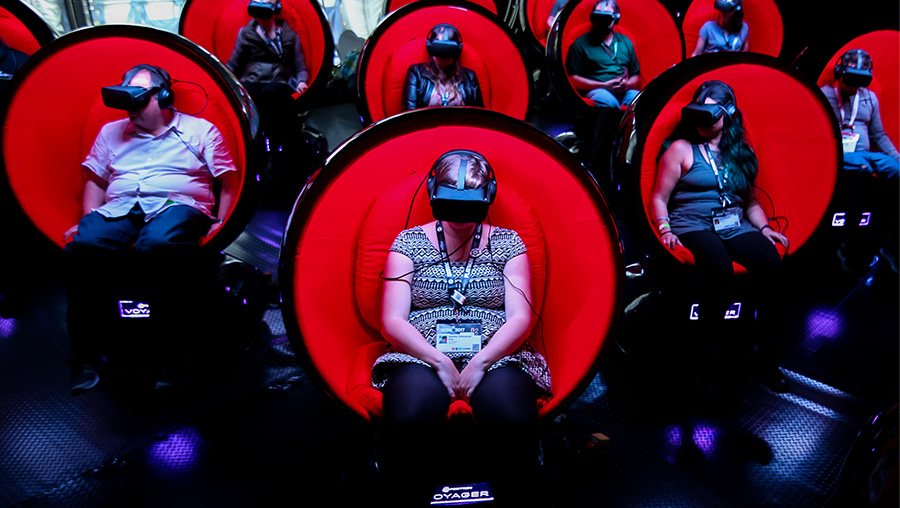
THE MUMMY Zero Gravity VR, photo by Randy & Jackie Smith
Market Sees Slow Rise of the
VR Machine
By Neil Miller
ingrained in us from the time we are very young and is very different to our senses than reading on a screen,” reasons Sax.
Amy Gallo, Harvard Business Review contributor and author of HBR Guide to Dealing with Conflict and SXSW 2017 speaker, agrees: “Delving into a physical book is a more immersive experience than looking at a screen—it creates a separate space for your brain. Personally, I spend so much of my day staring at screens that picking up a book is a relief.”
In the film world, though there has undoubtedly been a move toward more widespread use of digital cameras and screening on digital formats, many filmmakers continue to shoot and develop their projects on tried-and-true celluloid film, just like their predecessors did a century ago. Last year at SXSW, no movies were screened using celluloid prints, but in 2017, five titles arrived in old-school film canisters and took advantage of the film projection capabilities of three Austin theaters.
One of those films, Most Beautiful Island, (directed by its writer and star Ana Asensio), won the Grand Jury Prize in the 2017 SXSW Film Awards’ Narrative Feature competition. According to both Asensio and cinematographer Noah Greenberg, the choice of using film was made to evoke the look and feel of classic New York City-set films from the 1970s.
“At a foundational level with film, there’s the look of the grain and the color that happens organically in a different way because it’s a mechanical process,” explains Greenberg. “There’s an aesthetic appeal to that that isn’t found in digital, and that in very subtle ways makes you feel like it’s more cinematic.”
“Something is lost when you see something digitally,” says Gabe Klinger, director of Porto, another of SXSW 2017’s celluloid films. “It’s like a reproduction of a painting. It’s just not the same thing ... We didn’t have to do any kind of elaborate color correction to really get the images to pop. The results are there. With digital, you have to do a lot of tinkering, a lot of experimenting.”
“I don’t look at things the same way on a computer,” says Noel Wells, director, writer and star of Mr. Roosevelt, which was shot on film and brought home two 2017 SXSW Film Awards. “I don’t care about them as much, and I want things to matter. I think people feel like it’s nostalgia, but I think it just literally feels better.”
Still, analog devotion requires a commitment on the part of creators to overcome its added costs and inconveniences. Linna describes the extensive waits she has had to recently endure for pressing plants to deliver Norton’s releases, due to backlogs caused by vinyl’s increased demand. Because of the closing of most film labs, Dustin Defa, director of Person to Person, explained that he had to have a crew member physically drive the film twice a week from New York City to Baltimore to be processed. But despite these hurdles, analog’s advocates remain devoted to the personal aspect of their chosen formats.
“I think the more things transition to computers, the more anxious and confused I am as a person,” says Wells. “When I start doing things that are physical, and I can touch them, it just makes more sense to me.”
“Creativity is not always the most efficient thing,” explains Sax. “Sometimes the way to achieve it makes you work a little harder, make certain sacrifices ... whether it’s shooting on film, or creating something that can’t be instantaneously shared. Sometimes that’s more lasting because it connects with people and is more meaningful.”
The innovation superhighway is littered with forgotten media formats and devices. With the continuing advances in digital technology promising the convenience of being able to store and access one’s entire media library on one small device, the future seems destined to be written on screens.
When the first iPhones and similar devices started becoming commonplace roughly a decade ago, the chorus of public opinion quickly predicted that single unit, stand-alone media formats such as records or books would soon join 8-tracks, DATs and Betamax videotapes in the dustbin of history. Yet, instead of shriveling up and blowing away during the ensuing years, the tried-and-true analog formats are holding on, and even surging in popularity compared to their digital counterparts.
In the music realm, digital downloads and compact discs have both experienced double-digit declines in recent sales years. On the contrary, alongside the rising popularity of paid streaming services, sales of vinyl LPs are burgeoning.
According to the Nielsen Music Year-End Report, vinyl sales in 2016 rose to 13 million units sold (compared to fewer than one million units sold in 2007), which marked an increase for the 11th consecutive year. For 2017, vinyl sales are projected to approach the $1 billion mark for the first time since the 1980s. In the U.K., vinyl sales (as compiled by British Phonographic Industry) reached a 25-year high in 2016, with consumers spending more on records than digital downloads. So what is driving this trend?
“Audiophiles will say there’s a ‘warmer’ sound to vinyl which is a good word for it, but to me there’s a way that a real record sounds that’s familiar ... close and personal,” says Miriam Linna, co-founder and operator of the Norton Records label, which has continually released vinyl since 1986. But although there have always been vinyl devotees and audiophiles long arguing the merits of LPs and 45s, the sharp increase in sales is also being fueled by younger listeners.
“Most people under 25 have listened to music on some kind of handheld device for their entire lives. They have access to all the music they own on that device, but at some point it just becomes wallpaper,” explains Greg Ellis, owner and operator of Austin’s Groovers’ Paradise Record Shop, and a veteran of the record retail and distribution business for more than 40 years. “Vinyl doesn’t allow you that luxury. Every 20 minutes or so, you have to make a decision … are you going to flip that record over or pick another or do something else? And you become more engaged with music than you have been your whole life, and once you become engaged with music, it’s got you.”
“If you go around to music festivals and ask the 20-something-year-olds, a significant number of them own a turntable,” says journalist David Sax, who spoke at SXSW 2016 and is author of the book The Revenge of Analog. “They’re going to physical records not out of a sense of nostalgia, but on their own merits, and as a complement to the streaming services that they all listen to.”
But the renewed interest isn’t just in music. On the publishing front, the eBook revolution that was supposed to render printed books and magazines useless has stalled. According to data from the Association of American Publishers (AAP) and Nielsen BookScan, eBook sales have dropped more than 10% since 2013, while print sales have risen each of the last three years. And tellingly, the steepest drop in eBooks has been in the children’s and young adult categories, indicating that younger readers still prefer print.
“The experience of reading on the page is so
Obsolescence Deferred as
Analog Rises Again
By Andy Smith
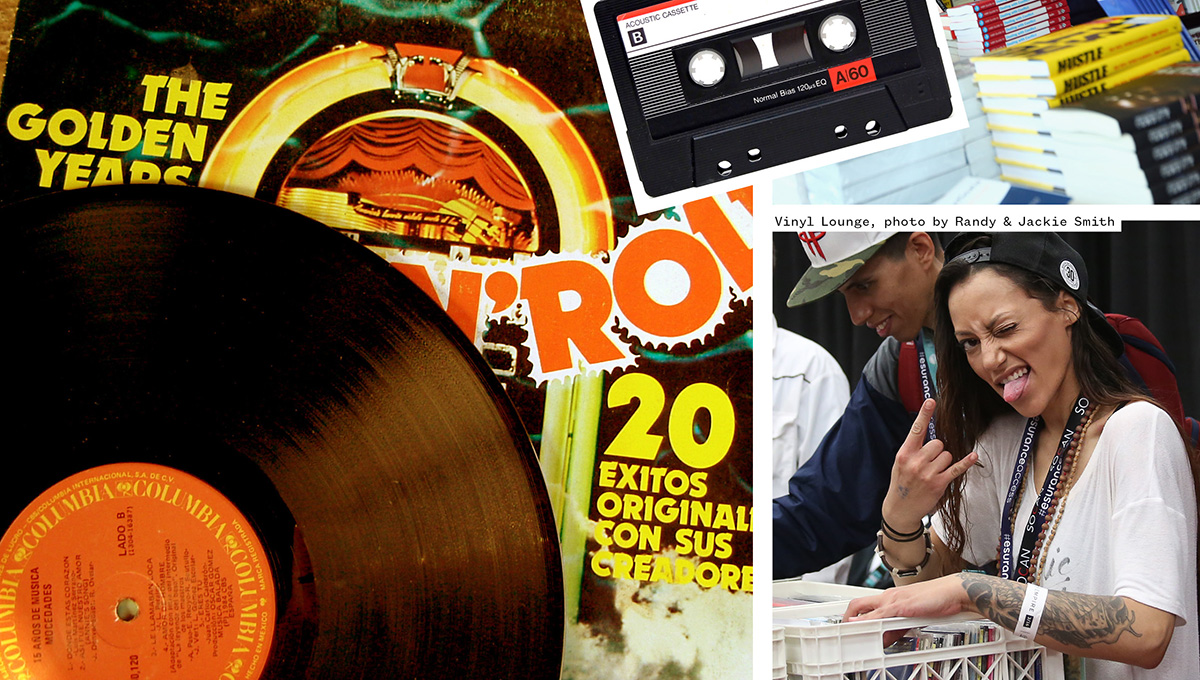
A group of creatives-in-residence also attended the hackathon, helping teams to generate ideas. Digital artist Andrew Jones, musician and activist Kiran Gandhi (also known as Madame Gandhi), music hacker Chris Hughes (Network of One), film producer Tara Ansley, DJ Evan Bartholomew, and the aforementioned Block, were all members of this diverse collective.
“I really enjoyed the spirit that the hackathon had, bringing in some actual artists in the industry and being able to listen to their challenges,” said Harper of their participation.
Madame Gandhi—who is, among many other titles, M.I.A.’s drummer—worked with a team of nine hackers to create “EntertainAR,” an AR app connected to Gandhi’s “The Future is Female” t-shirts. The app allows her fans to view a range of exclusive material, including 360-degree videos, by scanning the words on the t-shirt with their smartphones. The product serves two complementary purposes: to connect Gandhi’s merchandise with her online presence while giving fans access to exclusive content. “They really came to know my brand very well,” Gandhi said of the EntertainAR team.
Arpit Gupta, who organized the country’s largest VR hackathon, “Reality Virtually,” with MIT, served as a mentor and product manager for the team, which included a range of developers, designers and VR experts. “It had a great mix of people,” he said.
They built EntertainAR with the VR tools Vuforia and Unity, Gupta says. It uses “marker-based technology,” which trains the app to recognize the pattern on the t-shirt, and then trigger an augmented reality experience. The app also has the potential to scan other merchandise such as CDs and vinyl records.
The day after the hackathon, music and tech worlds collided in real time, when the EntertainAR team tested the app at Madame Gandhi’s SXSW showcase. There, they worked as Gandhi’s merch team, selling merch while demoing the product and collecting fans’ information. “None of us had ever been behind a merchandise table,” said Gupta, “So having that experience and getting to talk to real fans in that setting was incredible.”
Several members of the group have stayed in contact, Gupta says. They plan to work with freelance developers to add a couple of new features, and hope to commercialize the app in the near future. There’s a lot of potential for AR/VR innovations in the realm of live performance, he thinks.
If the work of SXSW’s hackathon teams is anything to go by, this potential may be realized soon.
The worlds of immersive technology and music converged in a big way at SXSW 2017’s panels, screenings and performances. Nowhere was this clearer than at the official SXSW Hackathon. Formerly branded as the SXSW Music Hackathon, this year the event expanded to include VR/AR and film categories. Many teams, including several winning ones, created apps that blended all three, using VR and AR technology to enhance the experiences of both musicians and fans.
The winners of the music category, Ctrl^3 (pronounced control cubed), connected Merge VR’s new “Holo Cube” with the live performance and recording software Ableton Live to build an interactive music creation platform for producers. Using the Holo Cube, Ctrl^3 allows producers to control Ableton’s synthesizers and audio filters, along with light effects in up to five dimensions. The goal, the team says, is to “push Ableton users to a new level of musical creativity.”
Following the hackathon, Ctrl^3’s creators Tom Brückner, from Germany, and Paul Wehner, who is based in California, met up in Los Angeles to discuss plans for a beta version of the product. They hope to test it with active producers and musicians including David Block (The Human Experience), who served as a creative-in-residence at the hackathon.
Another team, “Cubestrument” used the Holo Cube to create a virtual reality musical instrument, with several different, customizable “audio profiles.”
In the VR/AR category, the winning team, Space+Time Studio, built a platform that will help bring AR technology into the realm of live performance. “It’s a prototyping tool for mixed reality performance designers,” describes Max Harper, one half of the Boston-based team. “The stage of the future,” he says, will feature a range of holographic designs, including dance troupes and other effects that can be controlled by the performer.
Space+Time Studio will allow these future designers and artists to plan out a performance, and see what it will look like, using VR a model of the real performance space. It will also allow performers to integrate IoT (Internet of Things) technology to control lighting and other physical elements of the stage design.
Harper and his teammate, Amedeo Mapelli, created the platform using Mapelli’s own software called “Simmetri,” which is designed for interactive art builders and virtual reality storytellers. The two had met briefly before the hackathon, when Harper used Simmetri for a music video, but they cemented their working dynamic at SXSW. “It is definitely a kind of made at SouthBy relationship,” says Harper. The two have continued to collaborate on projects back home in Boston.
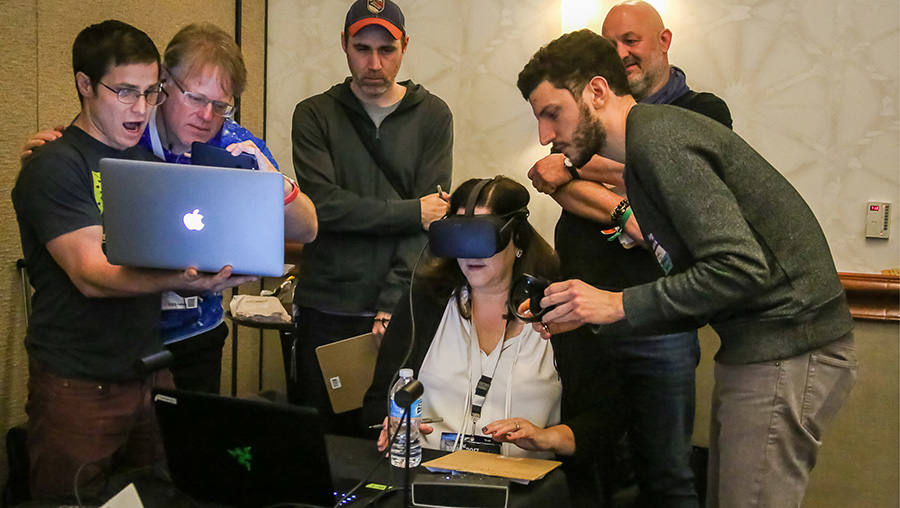
SXSW Hackathon, photo by Randy & Jackie Smith
innovation rules at
SXSW Hackathon
By Corinna Burford
Genre can’t exist without music. Imagine the shower scene in Psycho without Bernard Herrmann’s violin screech; a Quentin Tarantino joint boasting just dialogue and no deep cuts; Guardians of the Galaxy minus James Gunn’s playful ear for jukebox classics. All rely upon distinct sonic waves to attain the “cool factor” that defines the best fright flicks, action blowouts and space operas.
Nowhere was that more apparent at this year’s SXSW Film Festival than in two world premieres: David Leitch’s Charlize Theron-fronted beat ‘em up spectacle, Atomic Blonde, and Baby Driver, Edgar Wright’s delirious car chase movie. Both are stacked with musical flourishes that serve the narrative, add to character development, and rev viewers’ blood.
Leitch, who describes himself as an “action movie director” (he previously co-directed Keanu Reeves in John Wick and is currently in pre-production on Deadpool 2), goes as far as to describe Atomic Blonde’s eclectic ‘80s synth-pop soundtrack as the “total DNA of the movie.” Wright, meanwhile, says the “music came first” in the conception of Baby Driver: “The entire idea of the movie was to make an action film set to music.”
Apart from being so indebted to a varied selection of tracks, both known and obscure, Atomic Blonde and Baby Driver share another similarity in that each centers on a hard-to-read hero trying to get the job done. In Atomic Blonde, Theron goes full-throttle as Lorraine Broughton, a ruthless and mysterious undercover MI6 agent sent to Berlin during the Cold War to investigate the murder of a fellow agent and recover a missing list of double agents. Teen heartthrob Ansel Elgort (The Fault in Our Stars) channels Ryan Gosling in Drive as the Baby in Baby Driver, a quiet young getaway driver coerced into working for a crime boss.
Atomic Blonde is propelled by music, not solely in its many, bravura-staged action sequences, but in its quieter moments as well. Scenes that would otherwise be treated like throwaway sequences in other films, like one where Lorraine walks up to a bar, were entirely cut to the selected song. Prior to rolling camera, Leitch mapped out Kurt Johnstad’s script with songs at specific places to “arch Lorraine’s story.” “It was all by design,” he says.
“Capturing narrative pieces is actually pretty simple in terms of logistics,” adds Leitch. “It’s just getting the actors to trust and believe in the blocking … Luckily I had actors that knew what I was trying to do with that blocking. They understood that sometimes you just need to be on this mark whether it feels weird or not for this line and this moment.”
And although the film was set in 1989, Leitch didn’t feel confined by the period, borrowing lib
erally from the entire decade: songs range from Nena’s 1983 war protest song “99 Luftballons” to George Michael’s 1987 hit “Father Figure” to 1982’s “Under Pressure,” sung by David Bowie and Queen. Leitch says he chose tracks that “felt cool with the costumes” and “transported you back immediately.” Most importantly, they had to “drive the narrative.”
Wright, who previously directed Shaun of the Dead and Scott Pilgrim vs. the World, took a wholly different—some would say more radical—approach to Baby Driver. To craft his heist picture, he let his soundtrack lead him. “I wouldn’t really write a scene unless I had the right song,” he explains.
To serve his selections best, Wright made the playlist pivotal to the plot: Baby is just as obsessive about his iPod playlist as he is about his cars, rarely taking out his earbuds for the entirety of the film and relying upon the jams to execute his getaways.
Those cuts include “Easy” by The Commodores, the propulsive “Nowhere to Run” (which also features prominently in the trailer) by ’60s girl group Martha and the Vandellas, and “Bellbottom” from Jon Spencer Blues Explosion’s album Orange, which Wright credits as the first flicker of inspiration for Baby Driver some 22 years ago. “The first drafts of the screenplay, which date back to 2011, had all the songs written in and most of them didn’t change. I’d say 95 percent of them are still there,” Wright says.
He dubs the end result a “musical in inverted commas.” “Nobody ever sings out loud in it ... it doesn’t break the fourth wall—it’s all happening in the real world,” says Wright. “But one of the review quotes from SXSW that made me laugh and proud was: ‘Gone in Sixty Seconds directed by Busby Berkeley.’ Another said, ‘Heat remade as a jukebox musical.’ They’re not wrong!”
Narratively speaking, Atomic Blonde and Baby Driver don’t break new ground. But like the best genre films, they sell relatively simple stories with singular style, benefitting massively from thrilling soundscapes that surprise and charge the adrenaline.
“I think that there’s room to make interesting, creative films and not have to adhere to all these boxes,” says Leitch. “Tarantino does it; he makes crazy bold choices and people respect him for it. I love genre films, but even action films can get stale.
“I’m a fan of arthouse cinema, and I’m a fan of commercial cinema, and I think the stuff we made sort of fits somewhere in between. It’s not tentpole, but it has enough technical merit to run in the race with them, and it has enough soul and arthouse sensibility that you care about the characters.”
Baby Driver will be in theaters starting June 28. Atomic Blonde arrives on July 28.
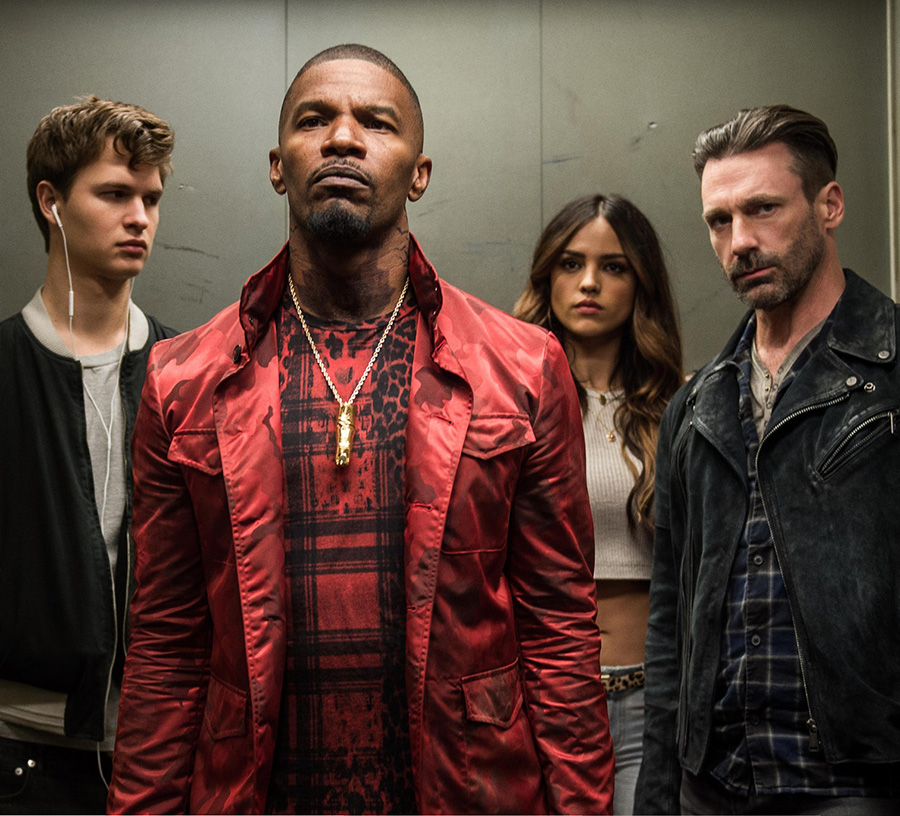
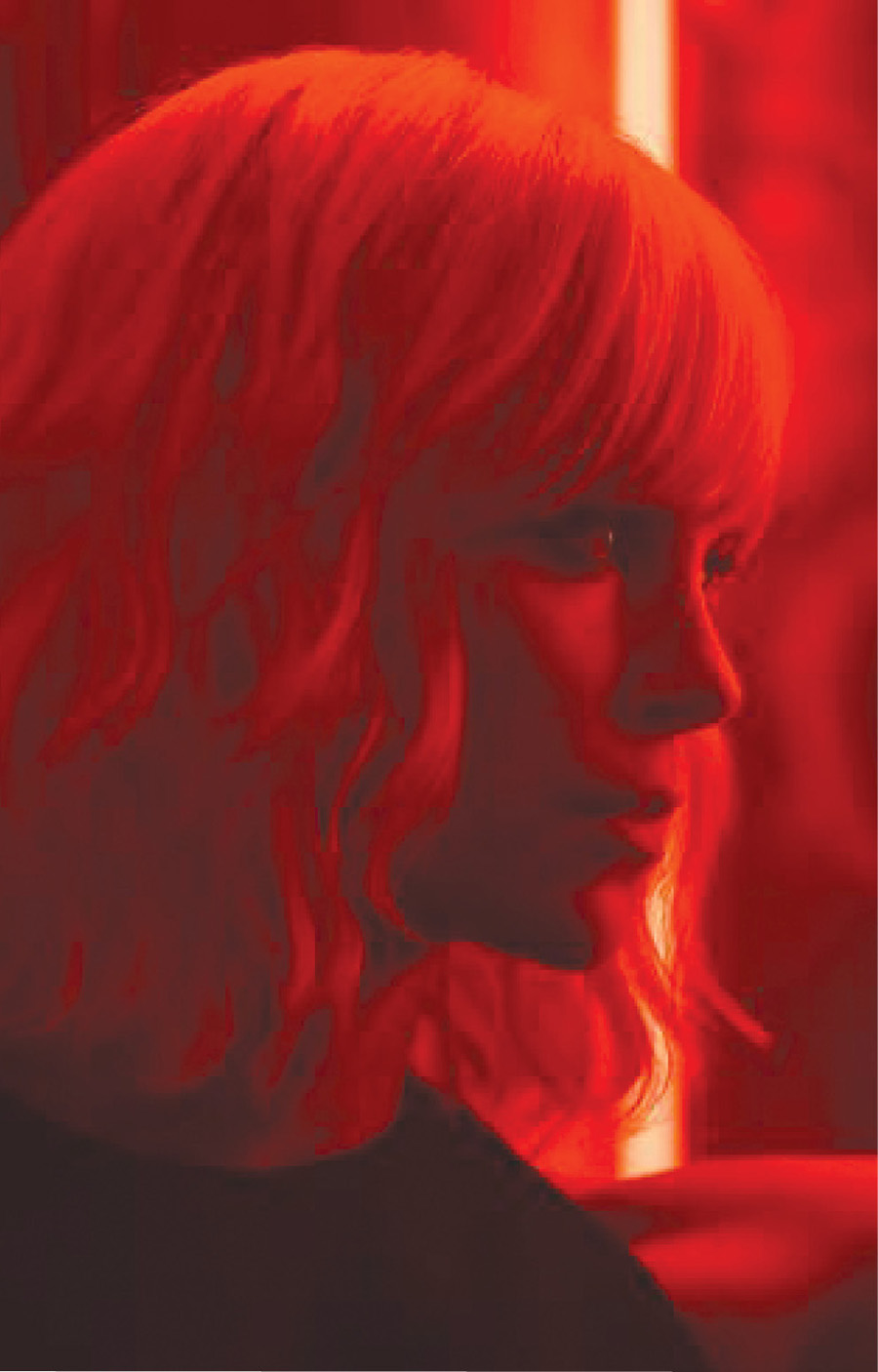
Scene from Baby Driver, photo by Wilson Webb
Scene from Atomic Blonde
Music Synchro
Lifts Action Films to New heights
By Nigel M. Smith
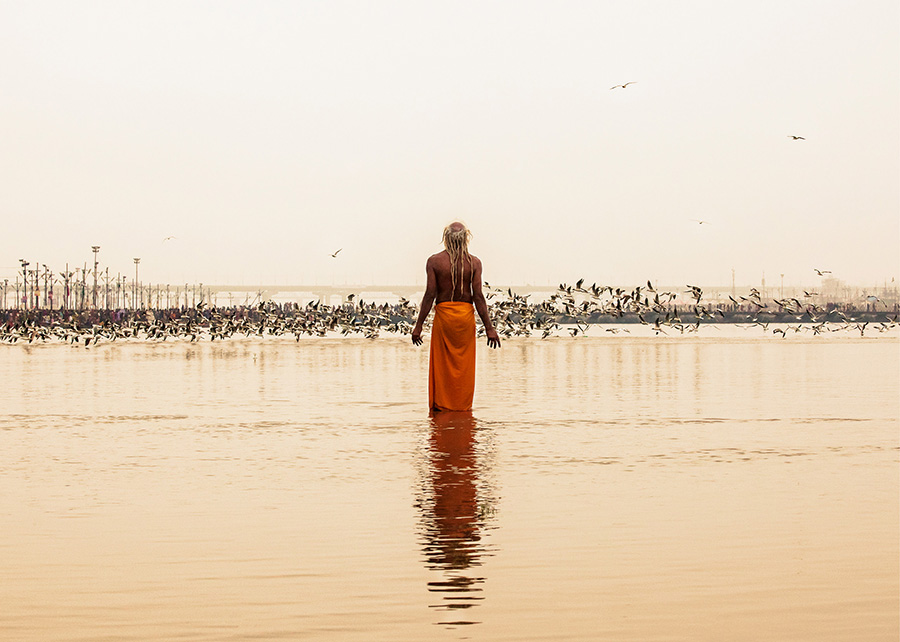
Following Fate
with Photographer Greg Davis
By John Krause
With his infinite wisdom and broken English, Mohan embodied a real-life Yoda. “The things that came out of Mohan’s mouth, ‘cloth paper dreams, the city is made of these things … Shanti, peaceful life for everyman, I want’, were beautiful,” says Davis.
Now four years later, Davis is going back to India, seeking Mohan and more importantly, the wisdom that resides within him. “It was never my plan … It is now,” says Davis. “I’m going back to find Mohan somewhere between the heavens and the earth.”
Davis, along with director Brad Feeser of Hearty Films, have already begun working on a feature-length documentary about their upcoming odyssey, titled The Man from Mathura. And with a plot as lofty as the heavens Mohan lives under, they acknowledge the challenge in front of them. “We’re going to this place where millions of people live, to find one person who lives on the streets,” he explains.
But this is where the latest godwink comes into play. “I Googled festivals in Mathura and two came up,” Davis says. “One’s in August when we’ll be there, Janmashtami, celebrating the birthday of Lord Krishna.” Davis figures that if anyone will be celebrating Krishna’s birthday, it will be Mohan.
If they succeed, will it be coincidence or serendipity? Feeser believes it is tiptoeing destiny’s fine line: “It’s not if we find Mohan, it’s when.”
When they do, Davis will give him a box with a gift inside. “What do you give to a man that has nothing and everything at the same time? He chose nothing.” he says. “The answer is in the box.”
To find out what’s in the box, follow The Man From Mathura on Facebook.
photo by Greg Davis
“Here’s a godwink for you,” says Greg Davis in a mellow Texas accent.
Godwinks are those serendipitous coincidences that can happen in life, and Davis, a world-traveling National Geographic Creative photographer who exhibited his work at SXSW 2017 as part of the first-ever Podcast Stage, embraces them to guide his work.
The one he’s talking about on this particular occasion is the impetus for his latest film project —a journey to find Mohan, a Hindu sadhu, or holy man, whom Davis photographed in 2013 during the Kumbh Mela religious fair in India.
Chronicled in Davis’s short film, Cloth Paper Dreams, Kumbh Mela occurs once every 12 years and is the largest religious pilgrimage in the world. One hundred million people journey to the confluence of the three holiest Hindu rivers—the Ganges, Yamuna and Sarasvati—to bathe and drink the water, which is believed to cleanse sins and break the cycle of reincarnation.
During Kumbh Mela, in a sea of millions on the banks of the Ganges, Davis saw Mohan waving to him. Davis sat down with Mohan and the two began chatting. When asked where he lived, Mohan said, “The sky is my roof, the land is my room.”
Beyond intrigued, Davis needed to know more. “I live near the birthplace of Lord Krishna,” said Mohan. By chance, Davis knew that place as Mathura but thought little of it at the time.
Over the next three days, Davis learned how Mohan, an only child, had come from a family of wealth, given it all up, as all sadhus do, and devoted himself to Brahman (God).
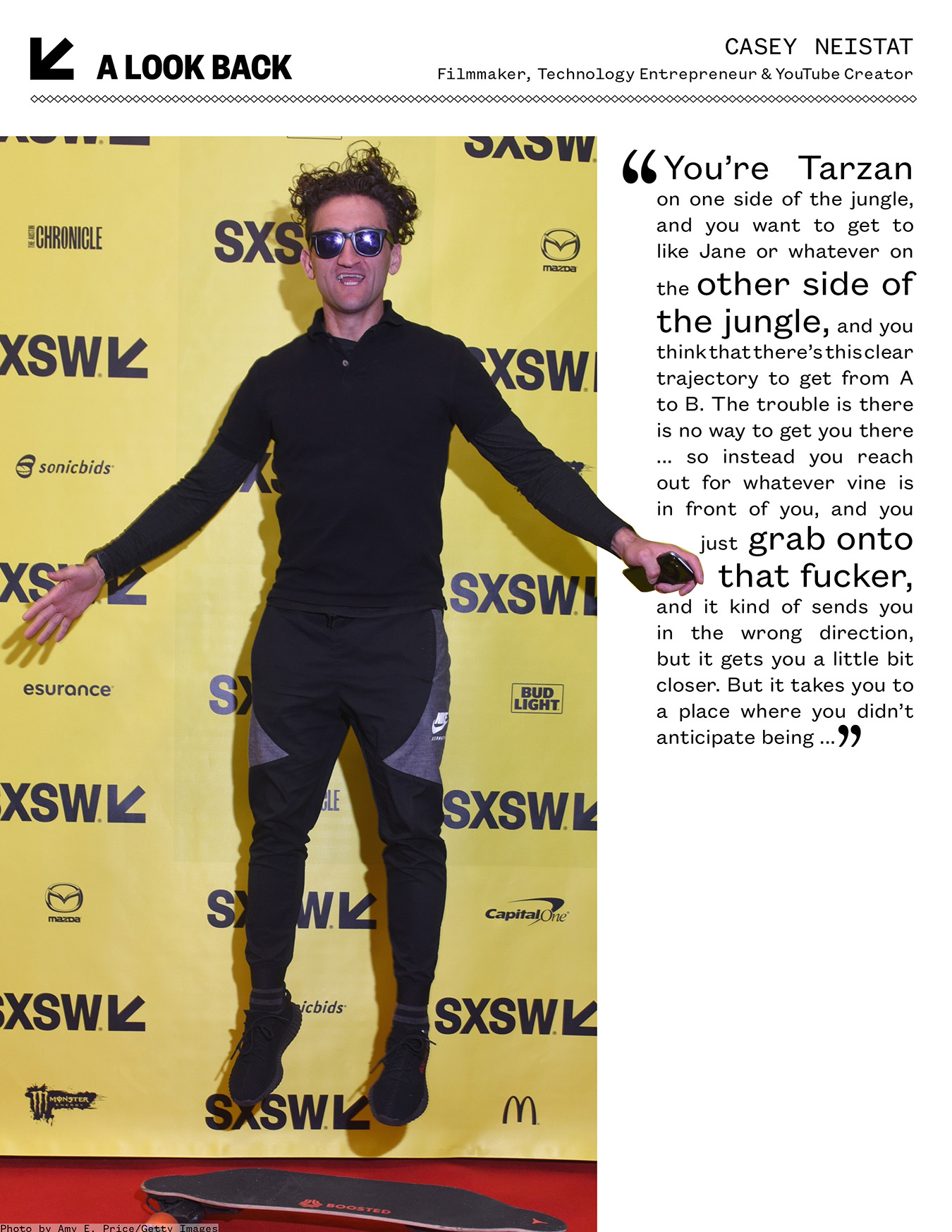
Neistat explained how to use
“The Tarzan Method” to navigate both one’s professional and personal life during his session at SXSW 2017: “From YouTube Star to
Media Company Co-Founder”.
